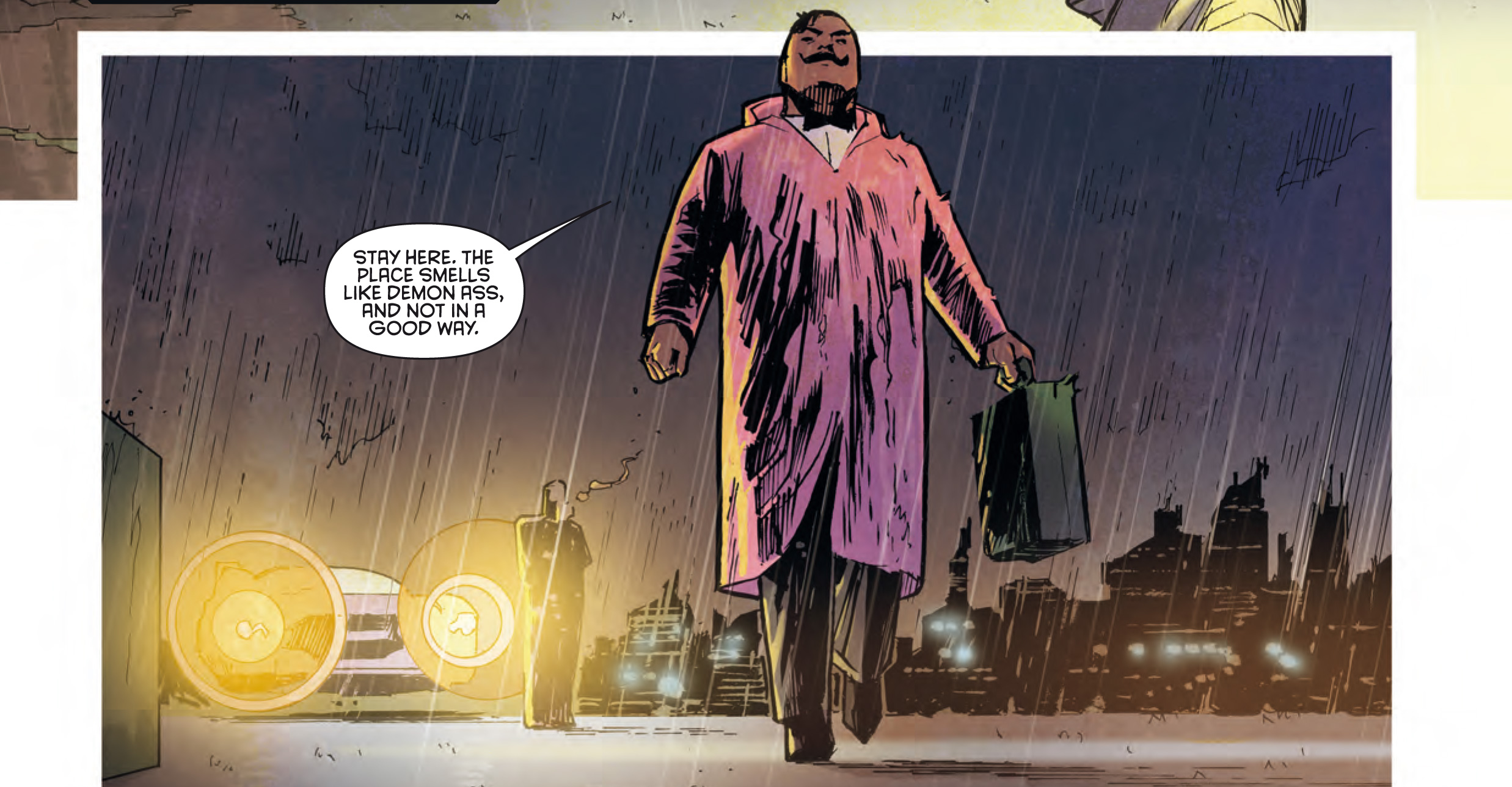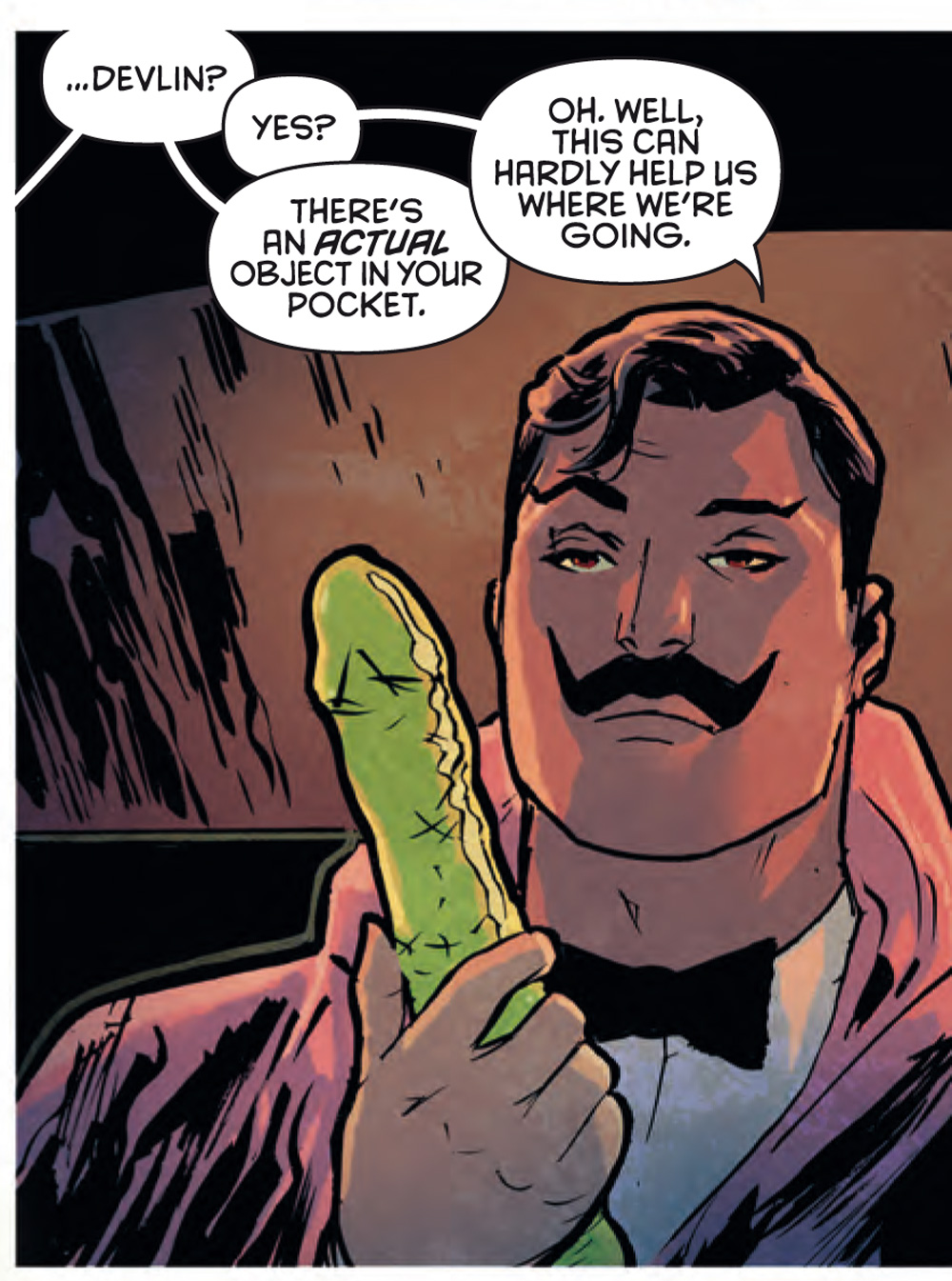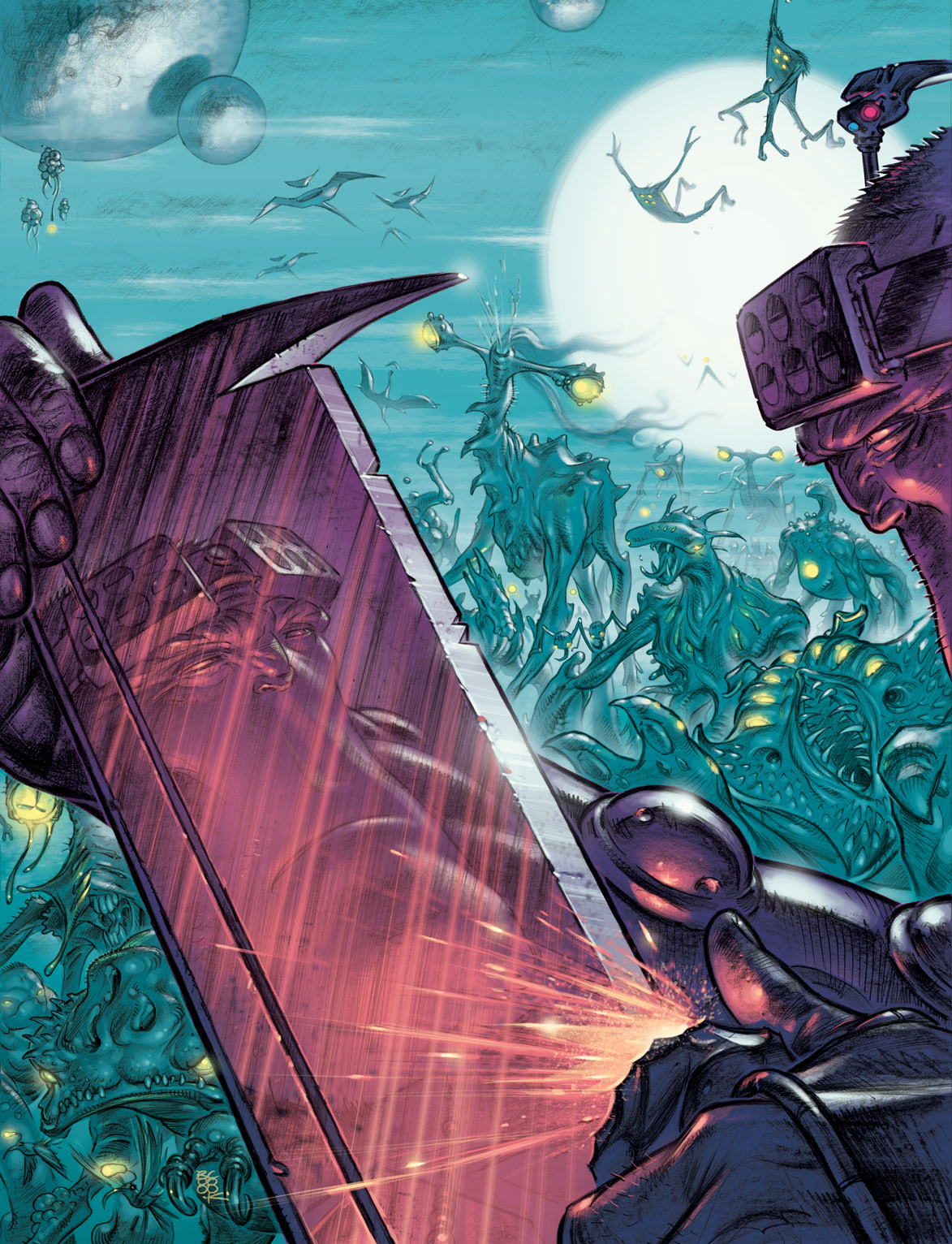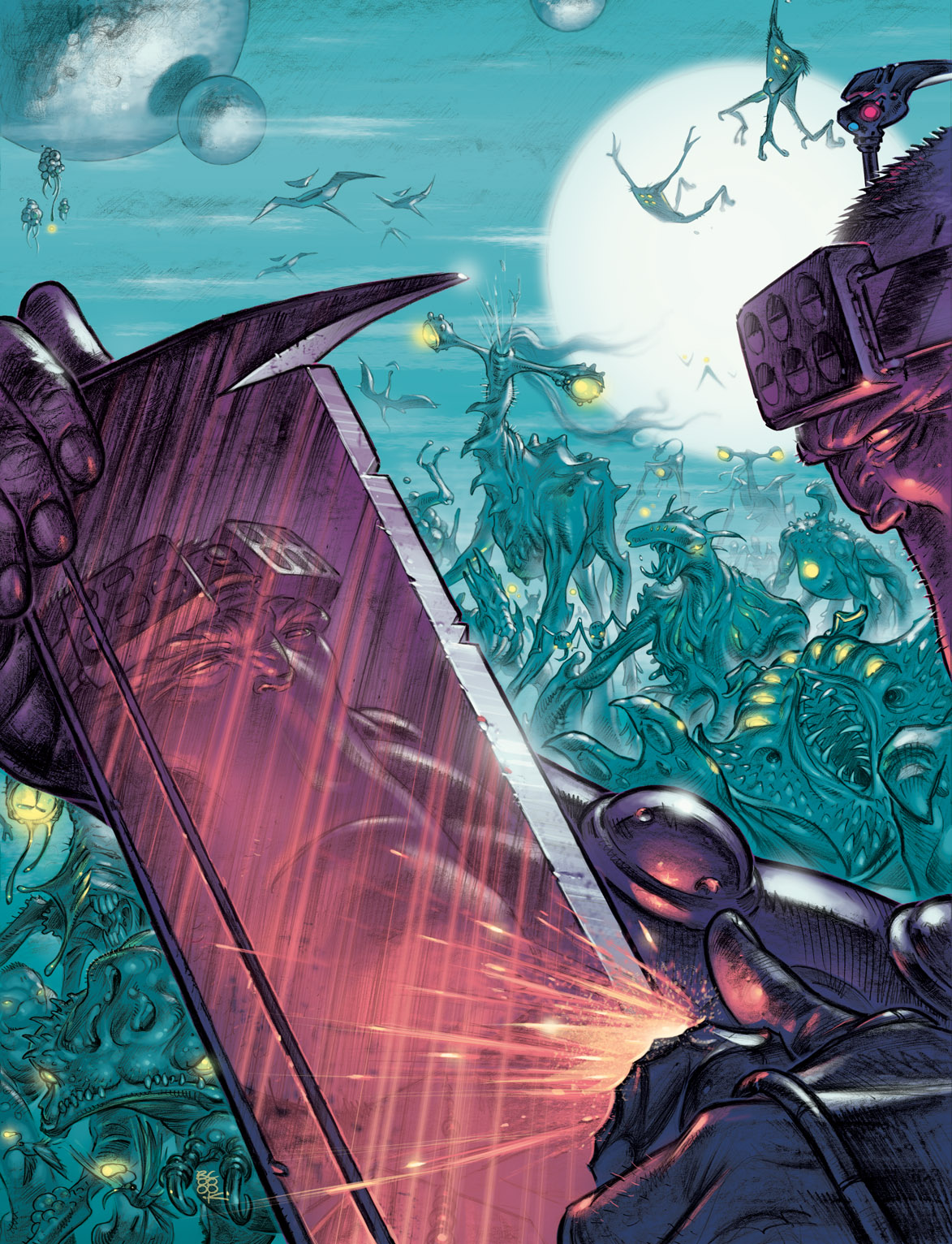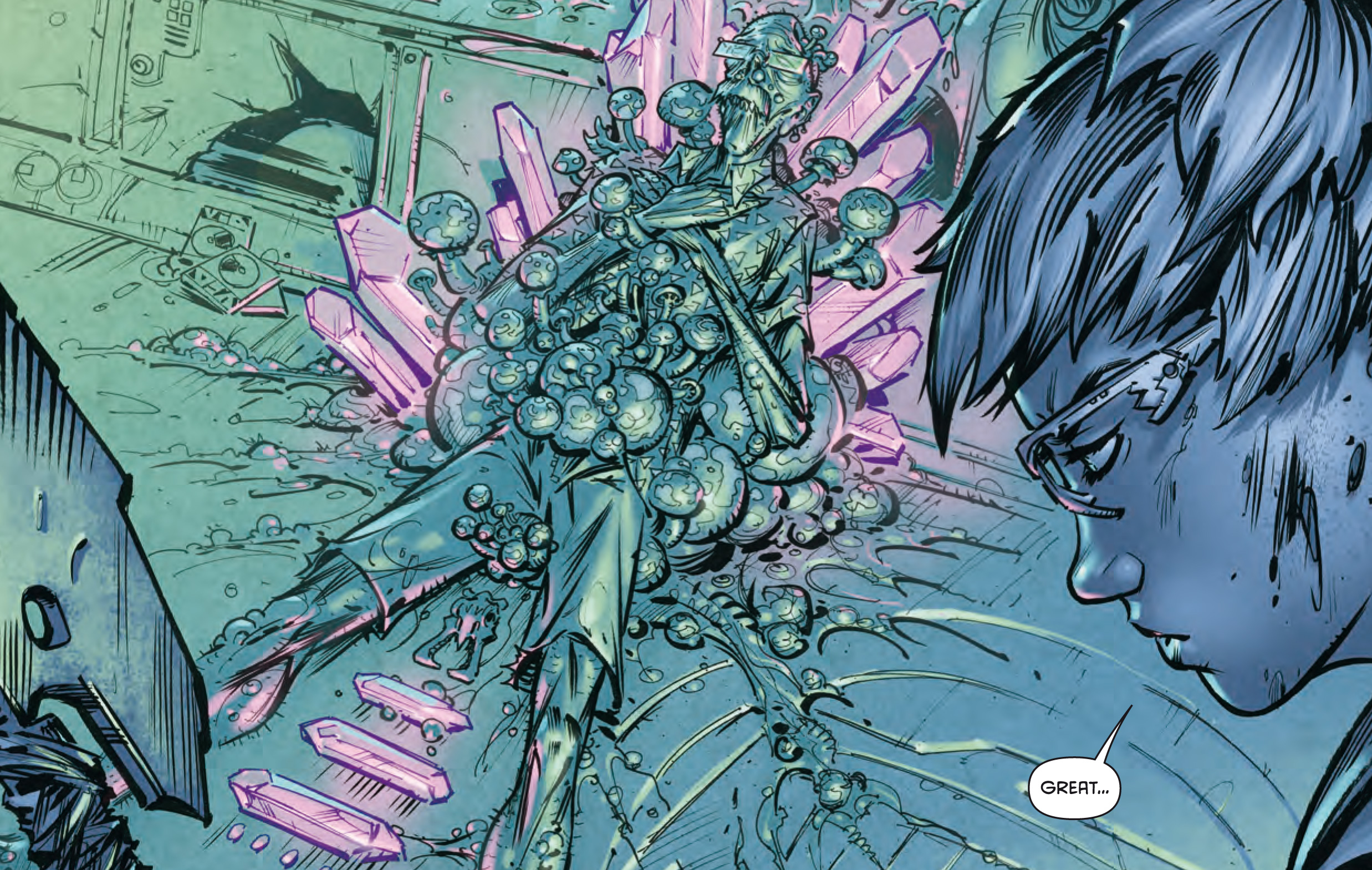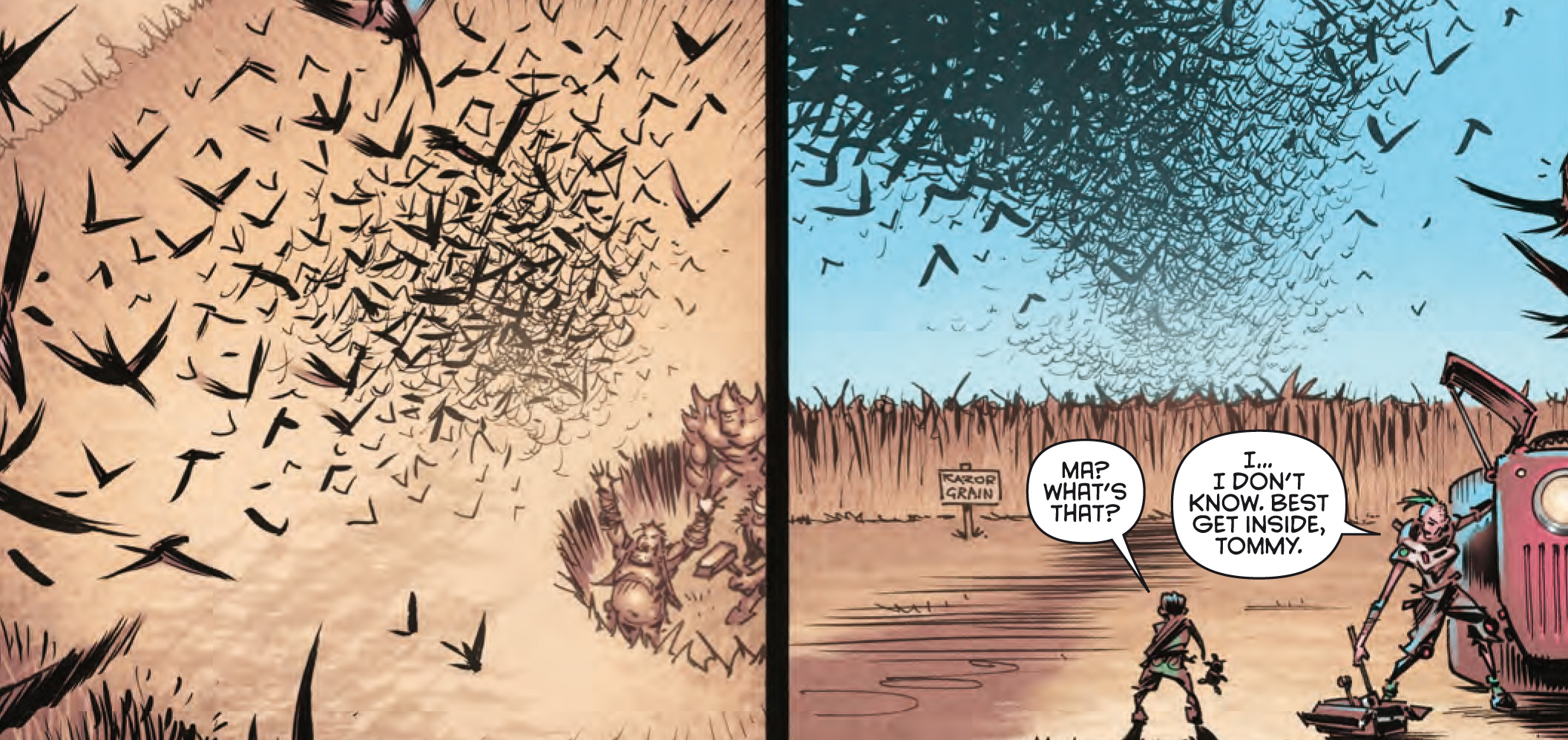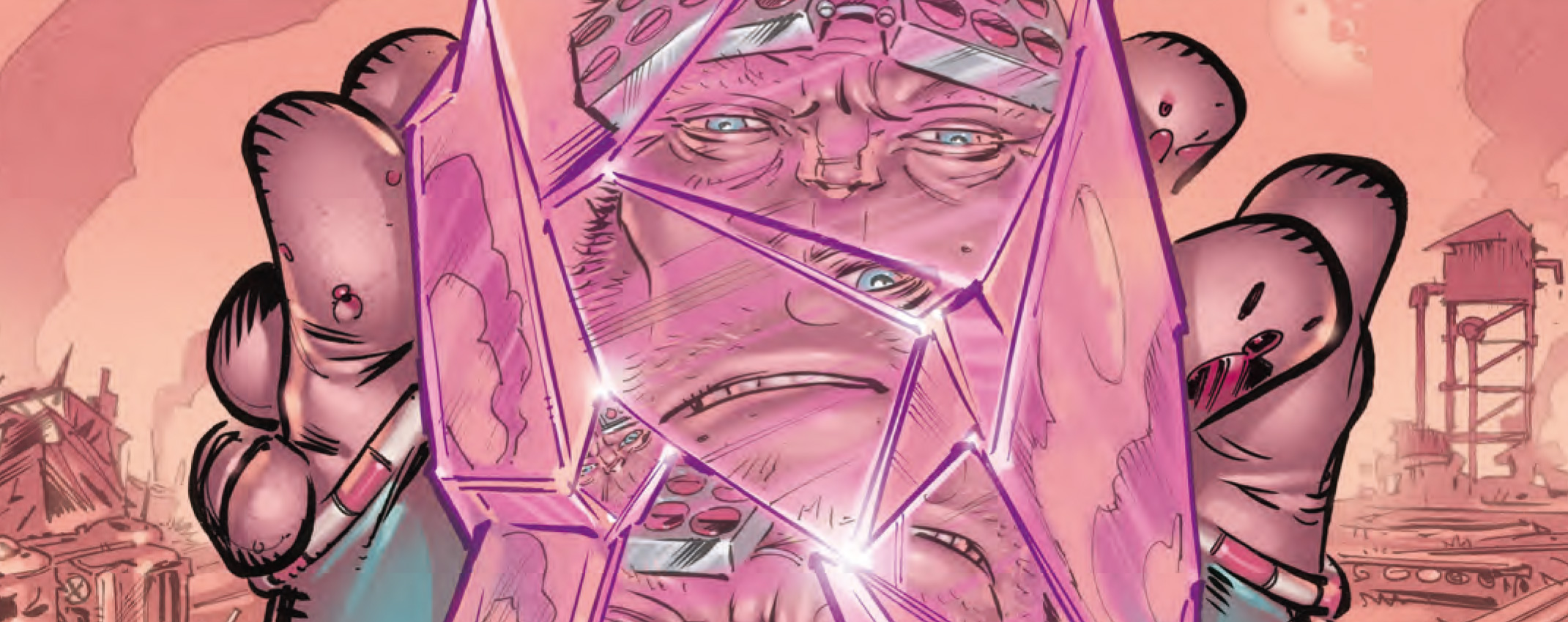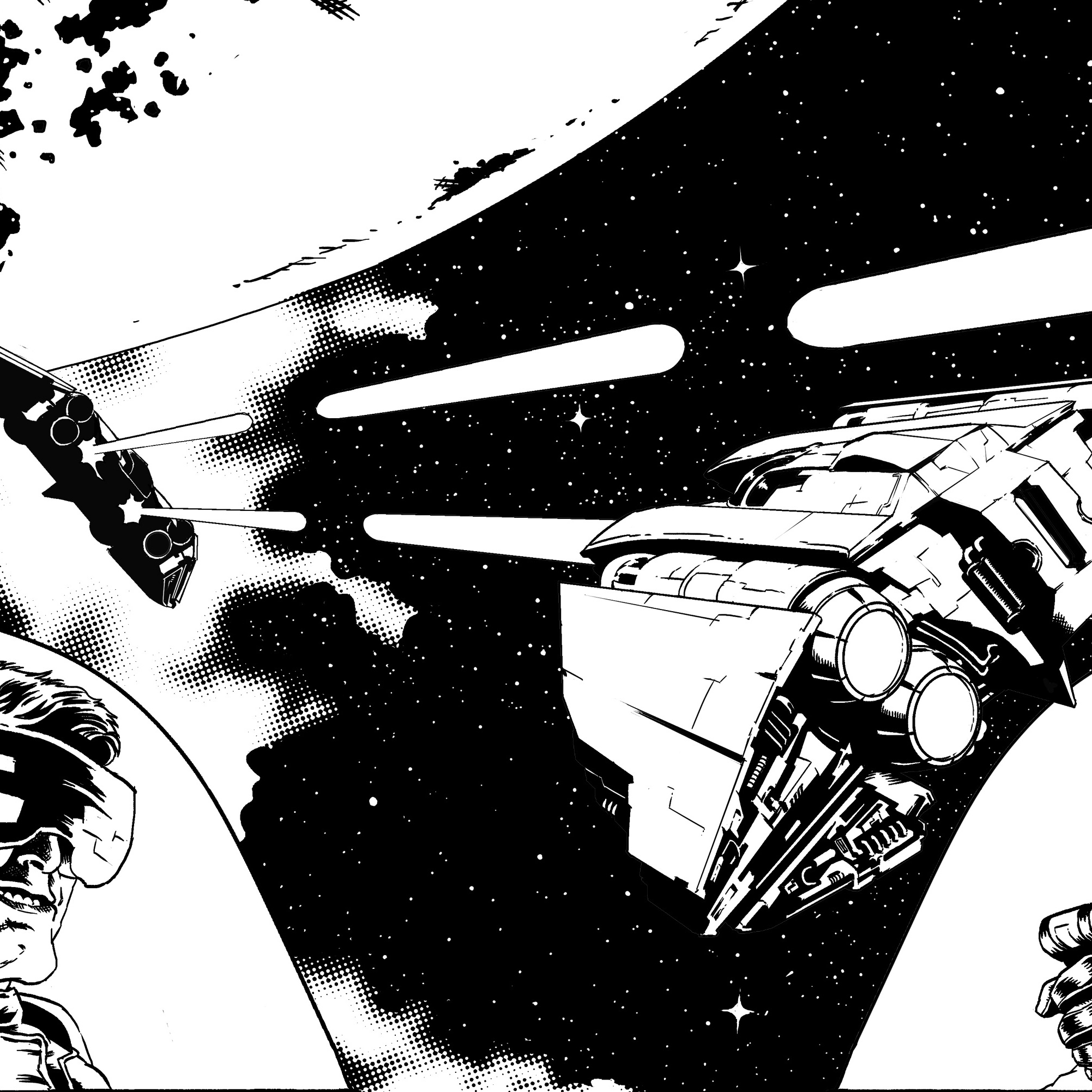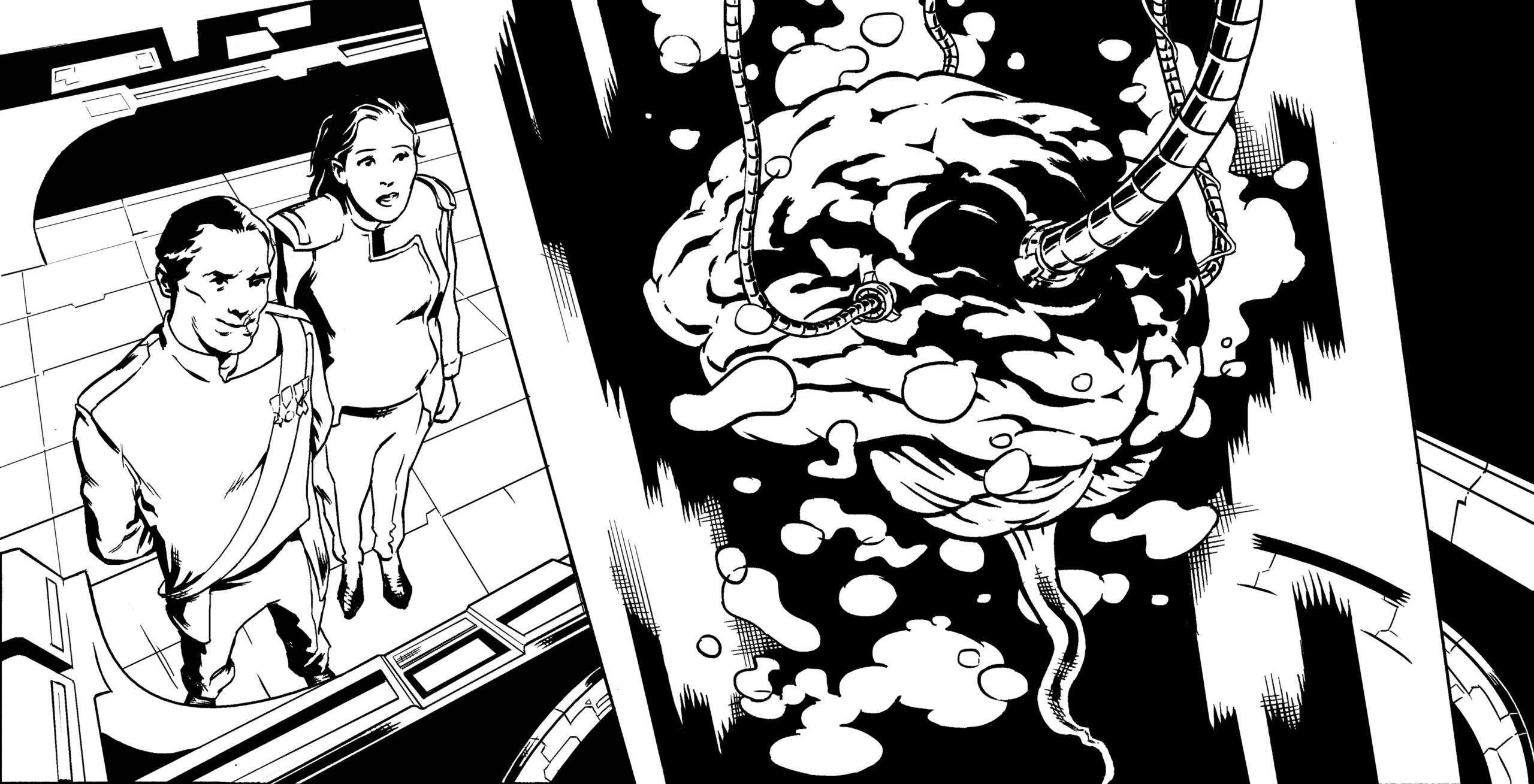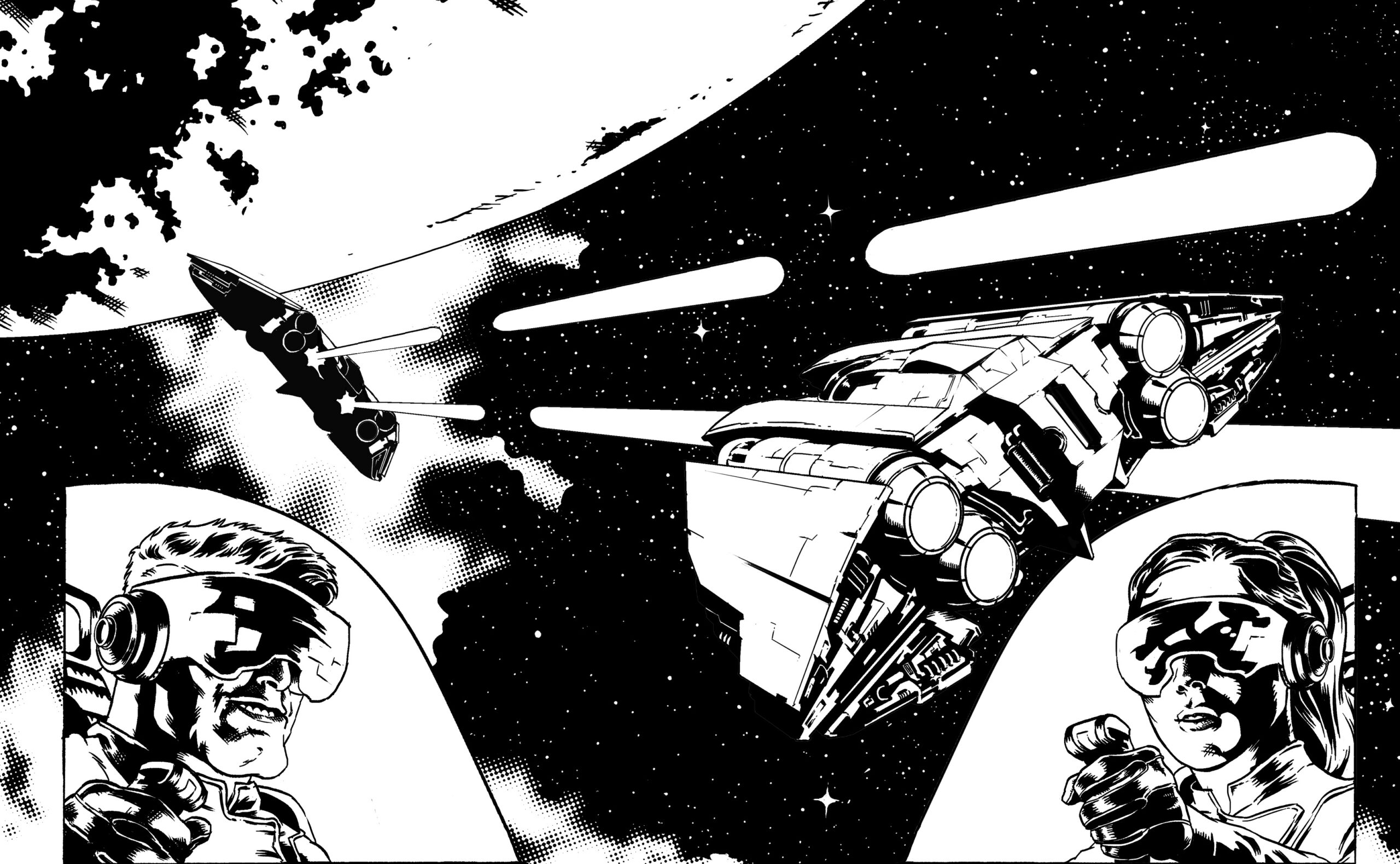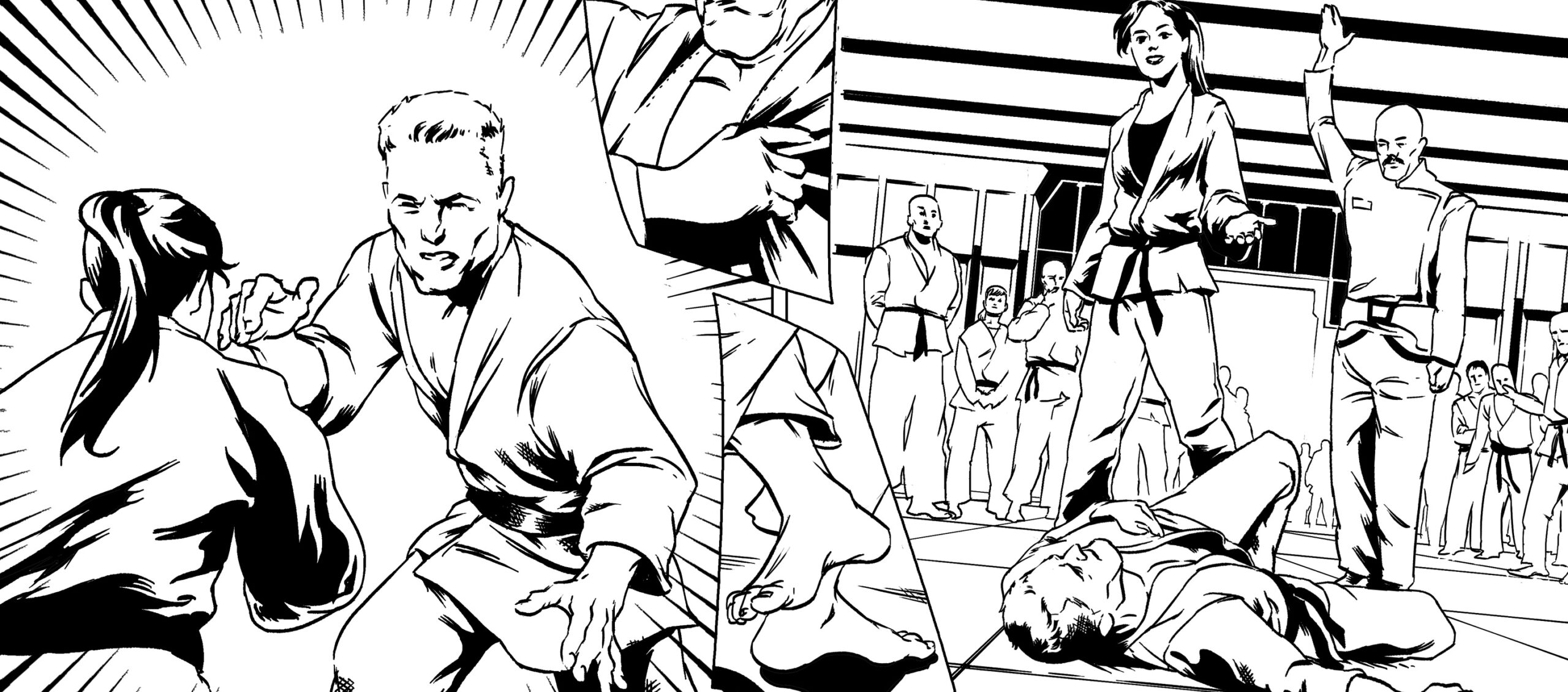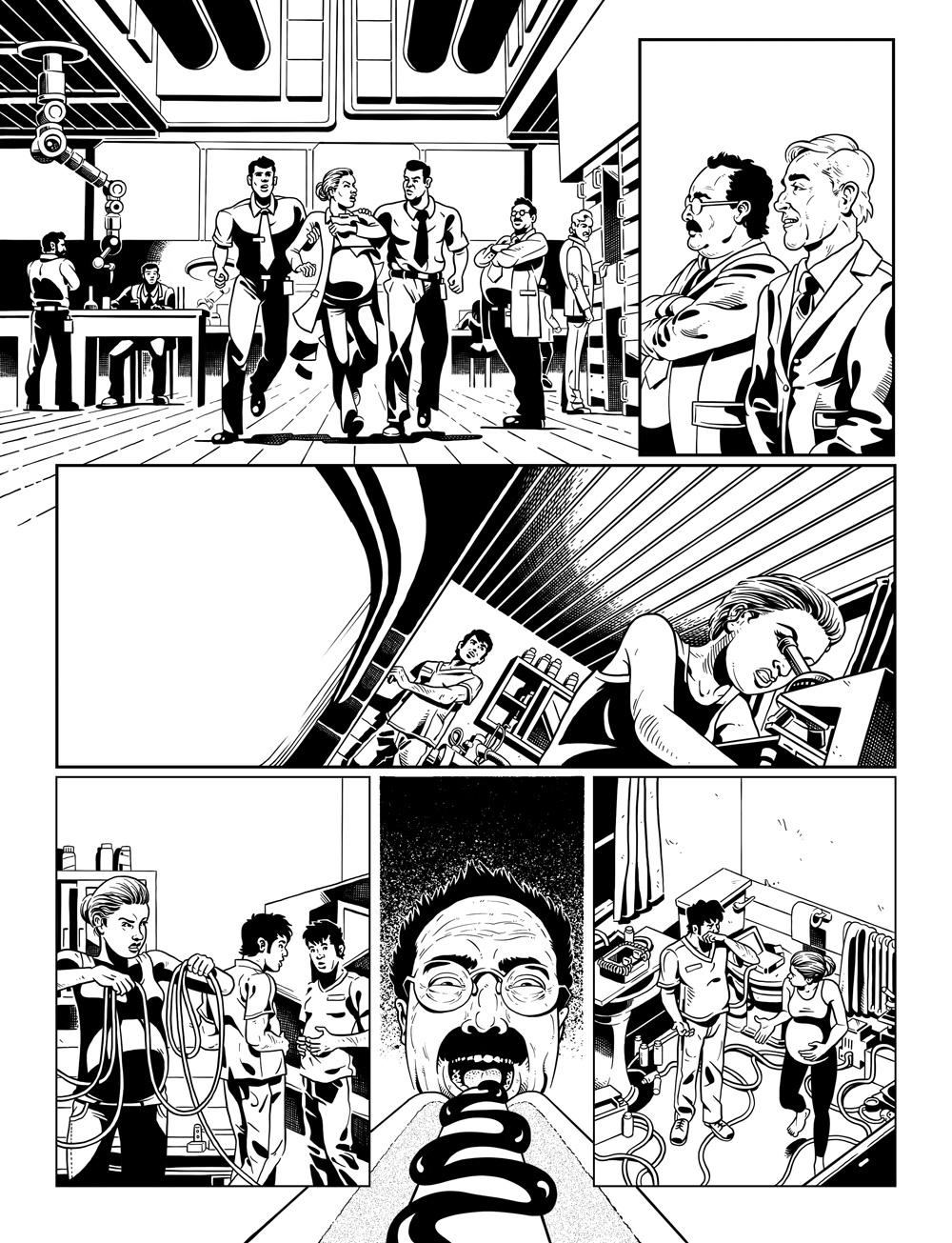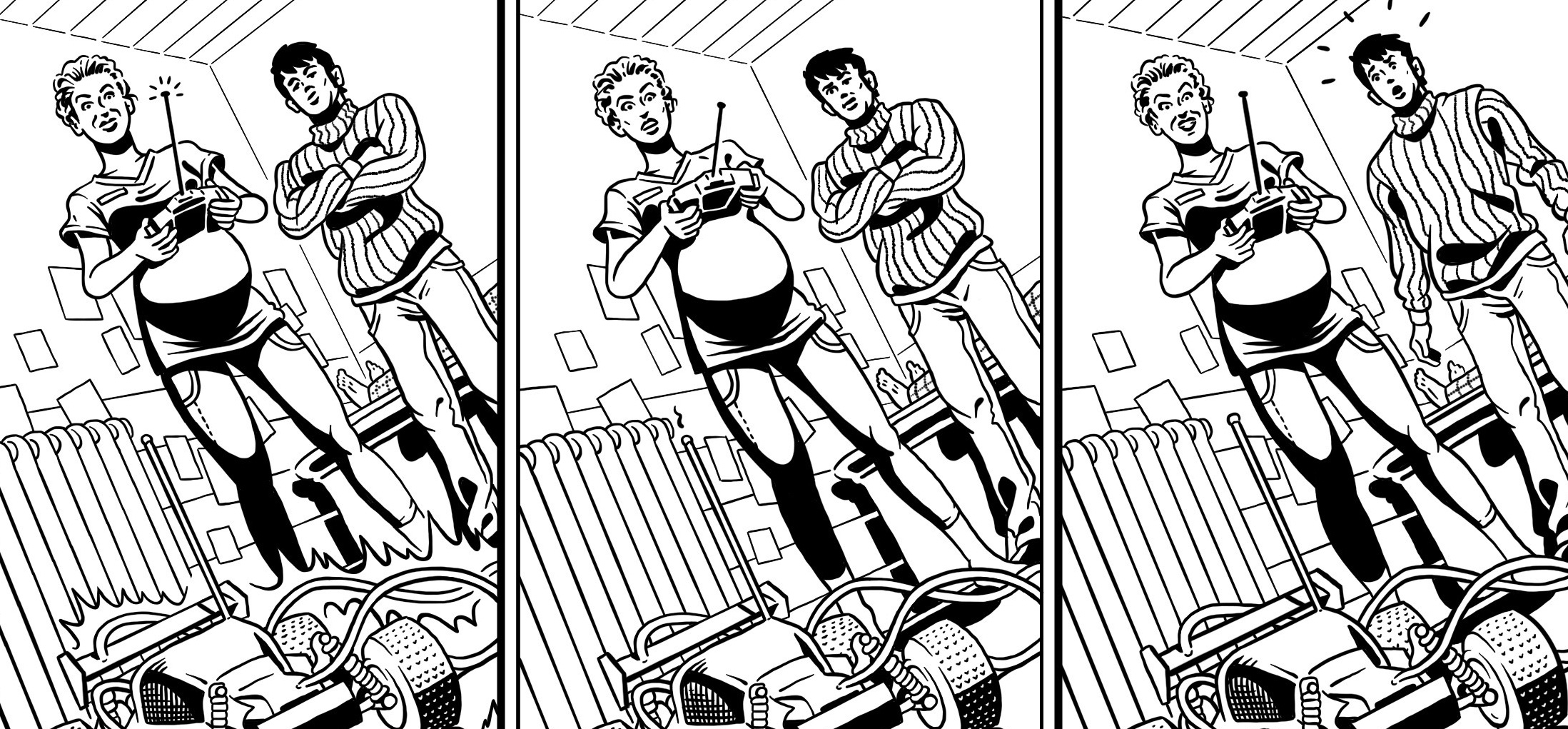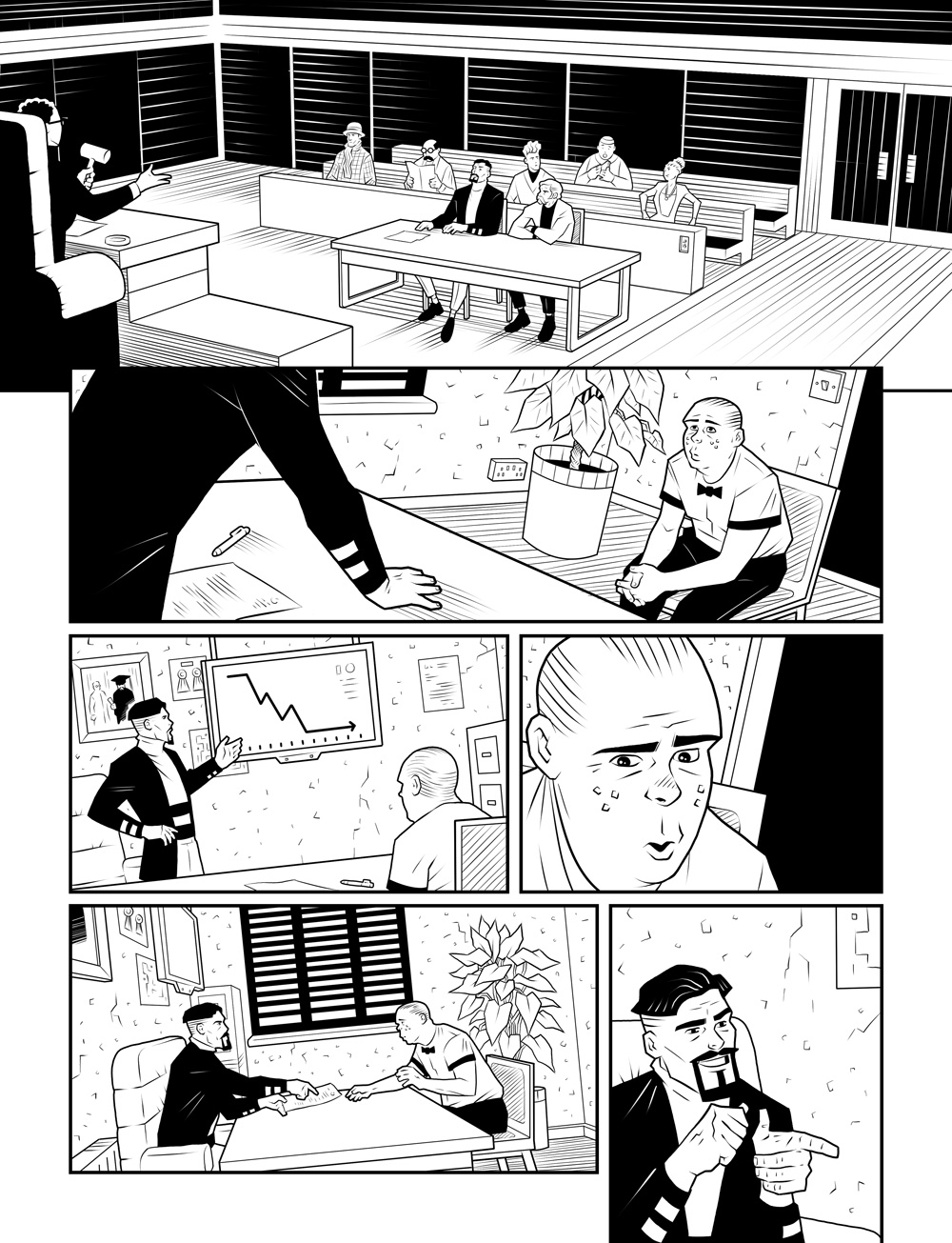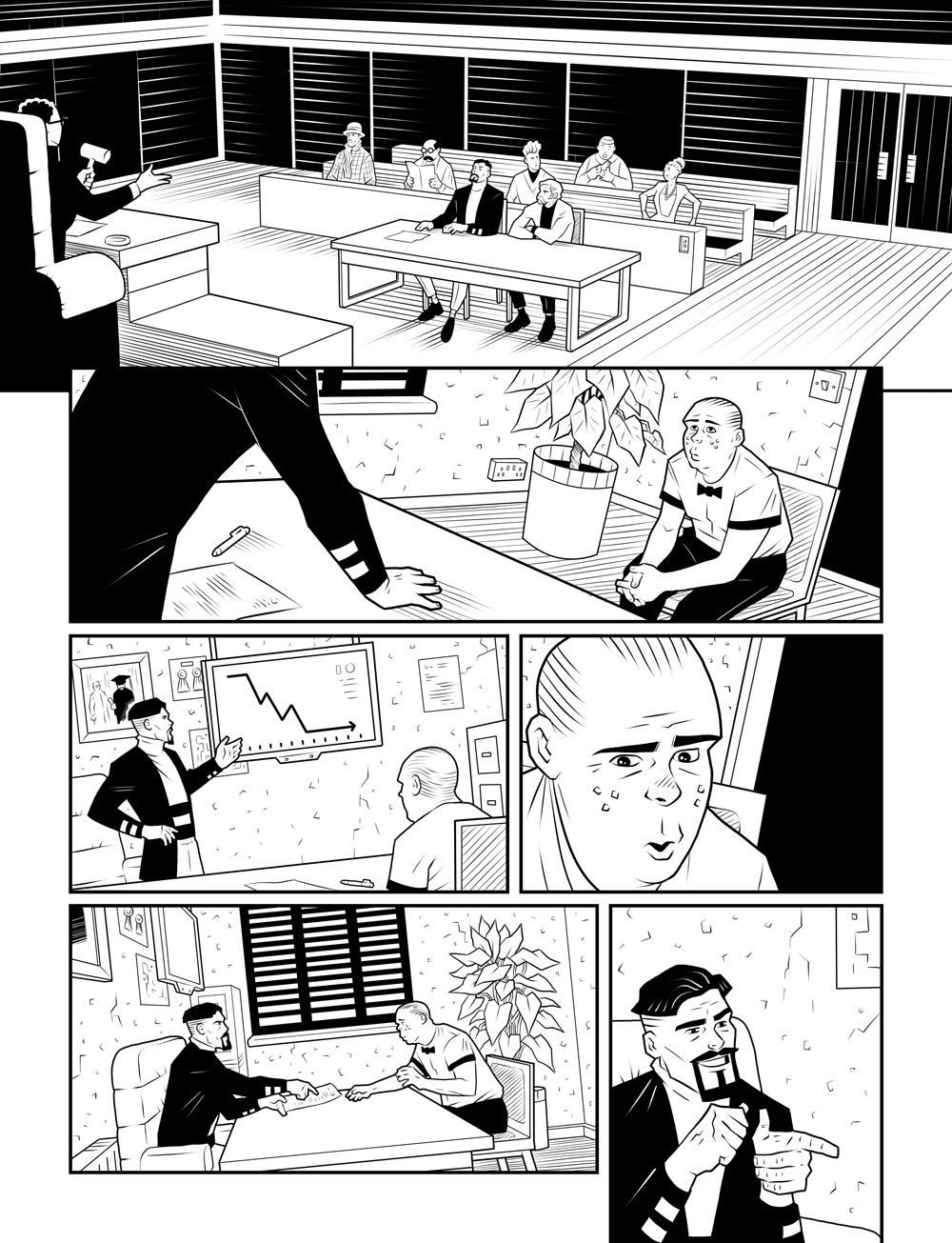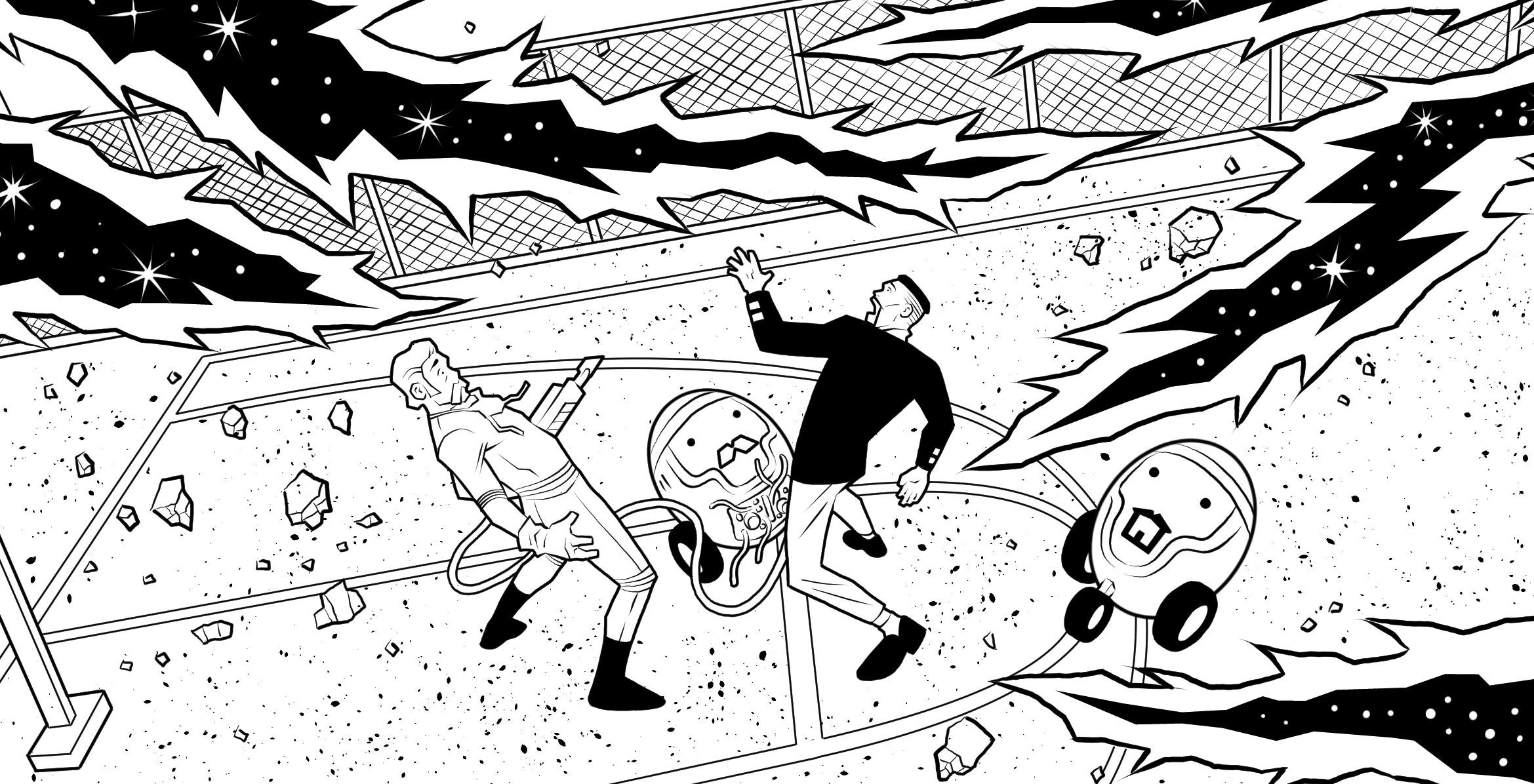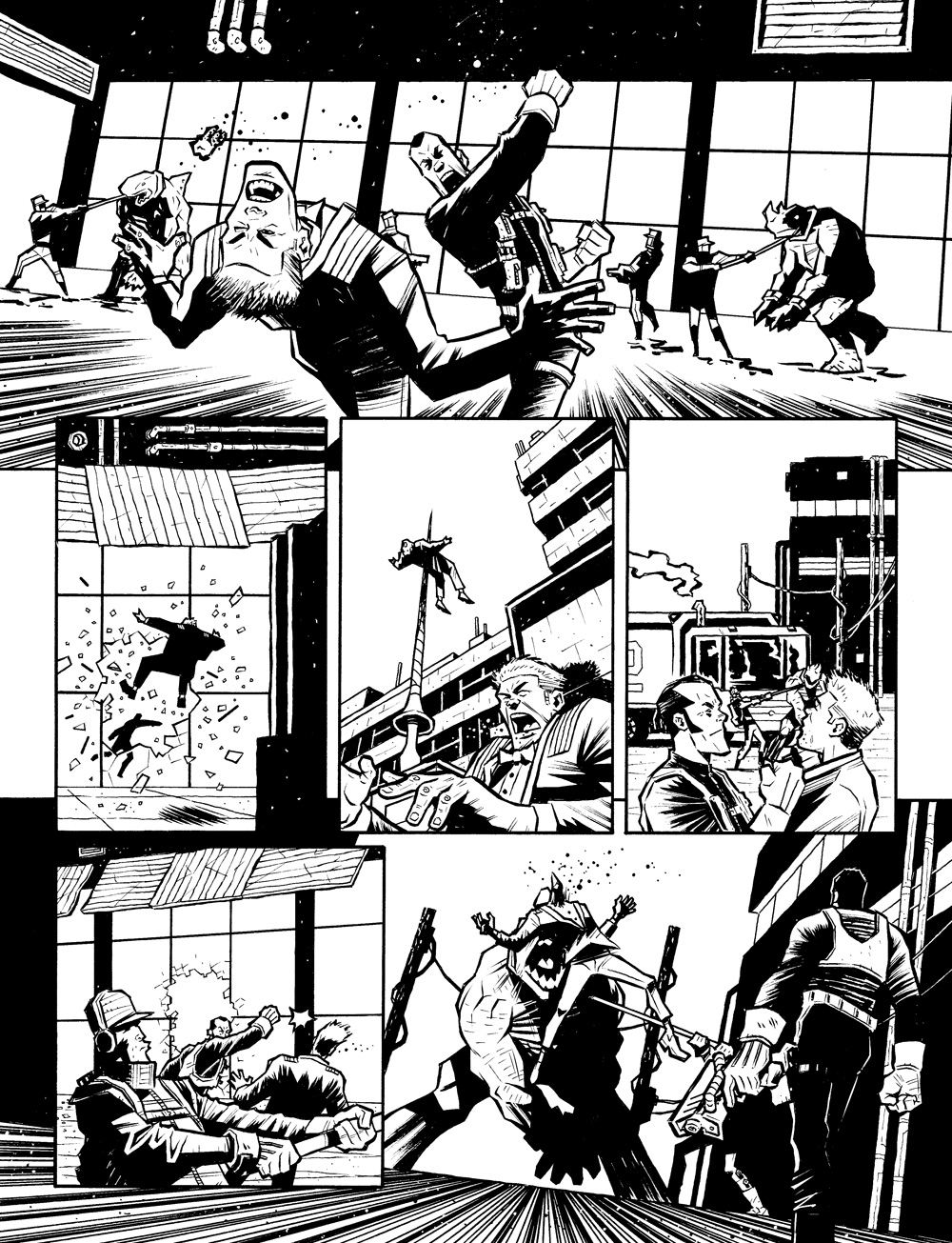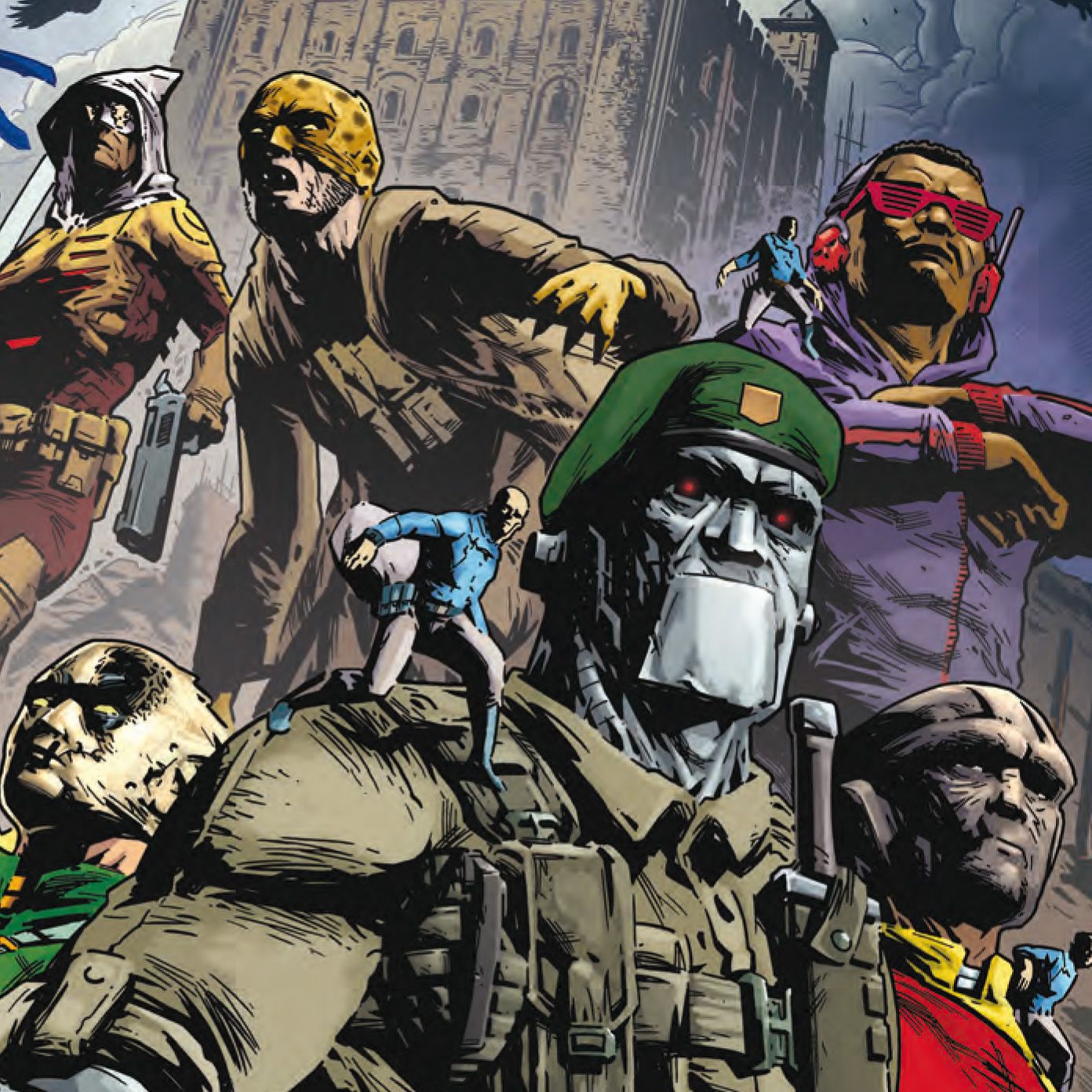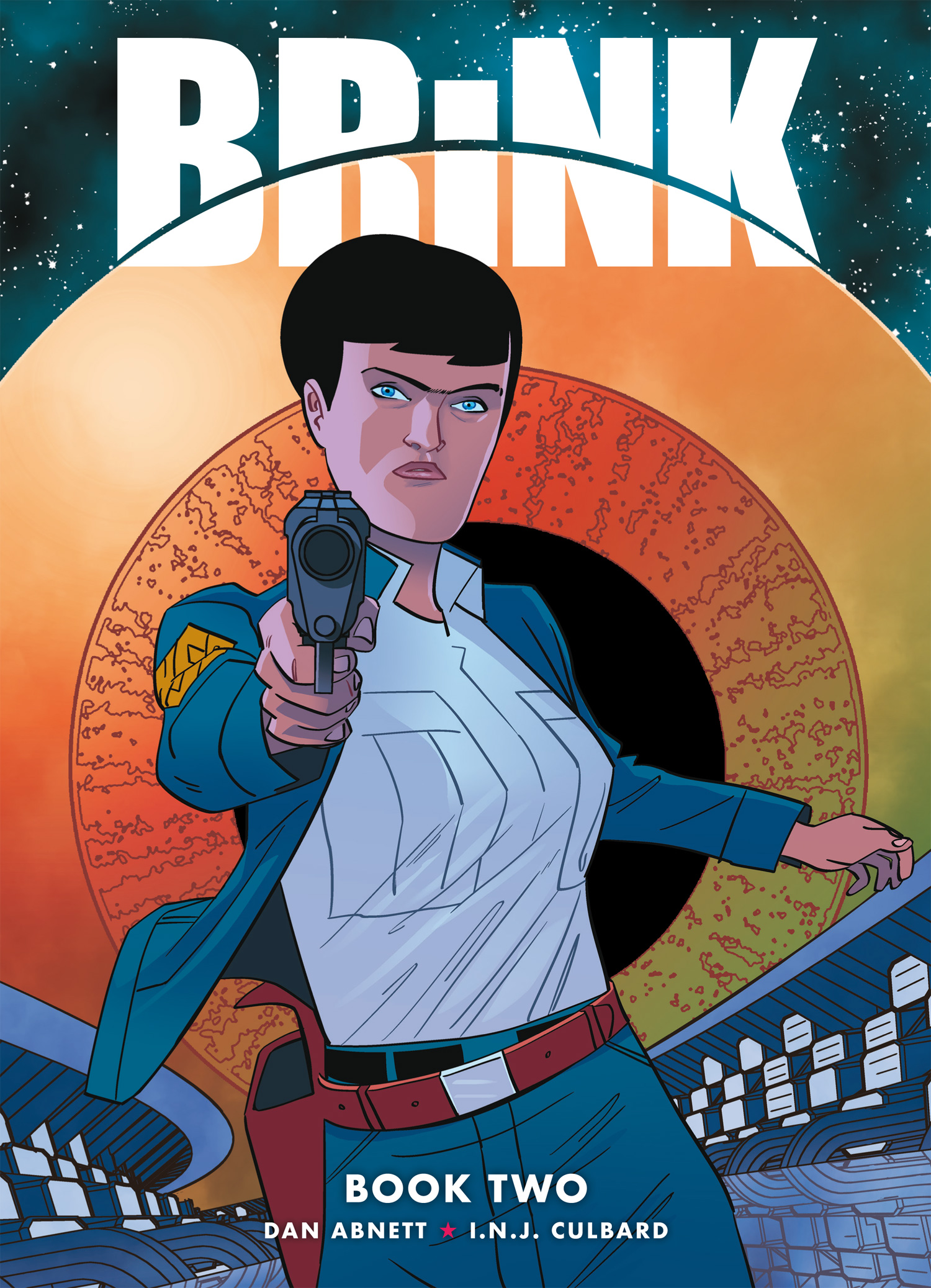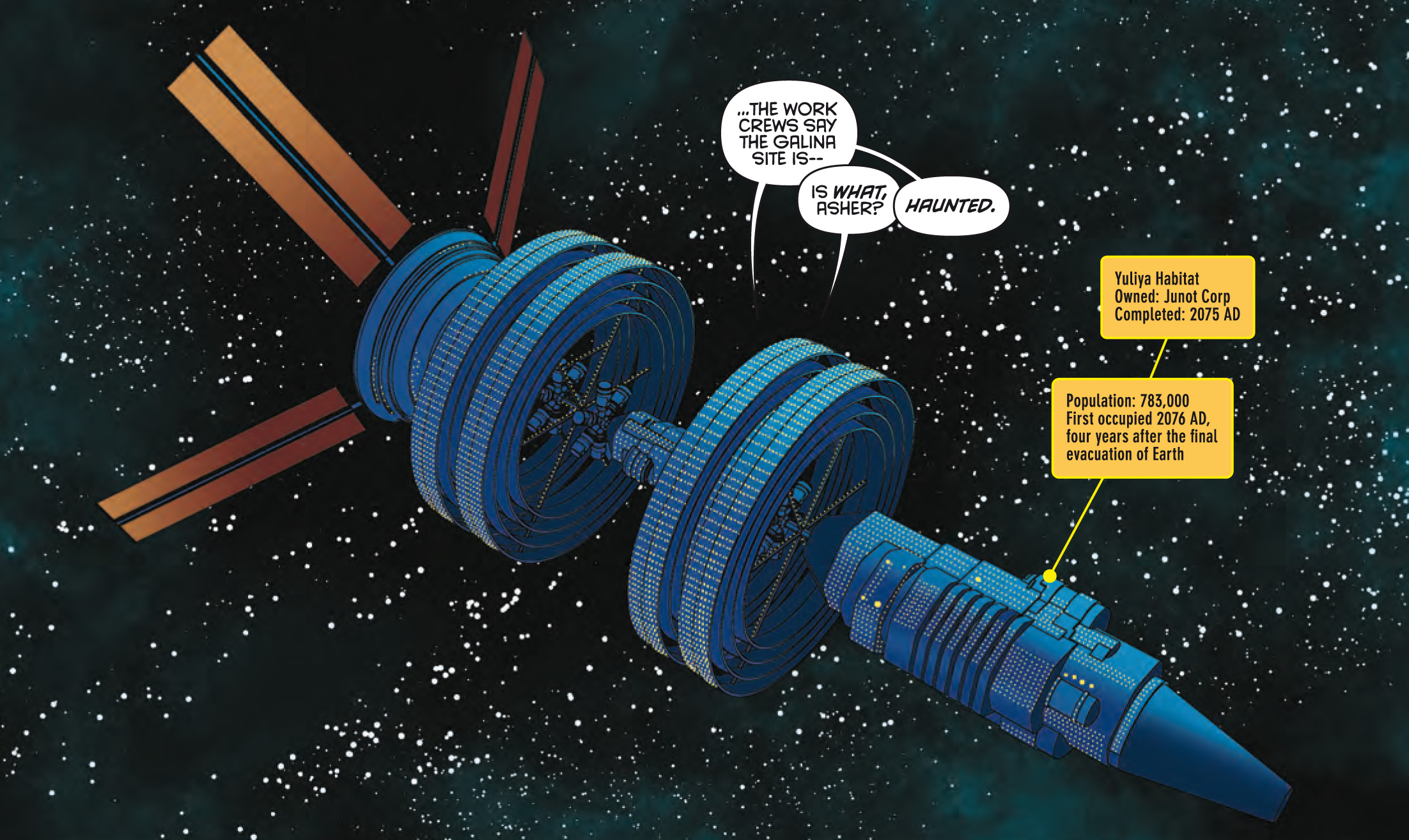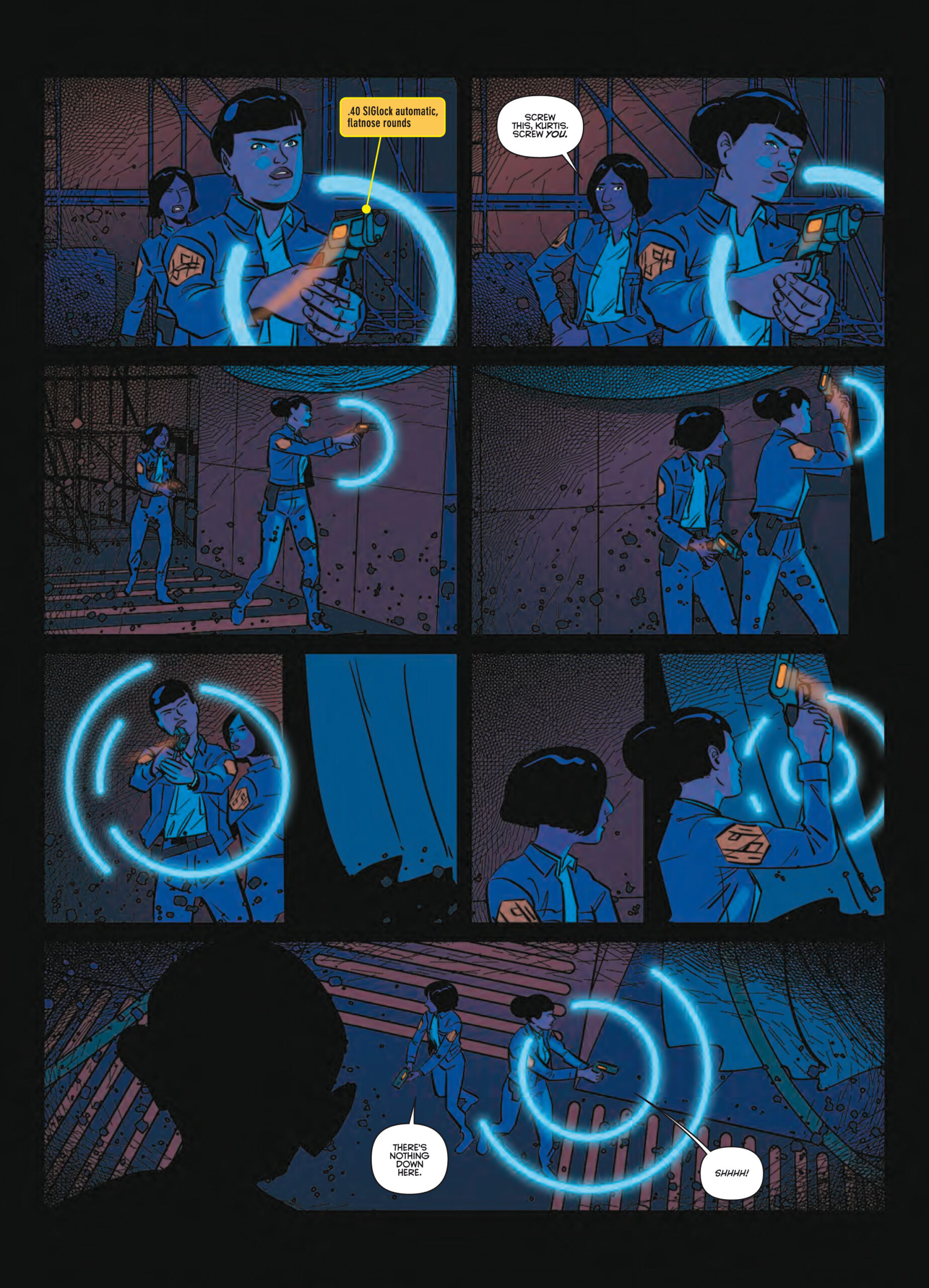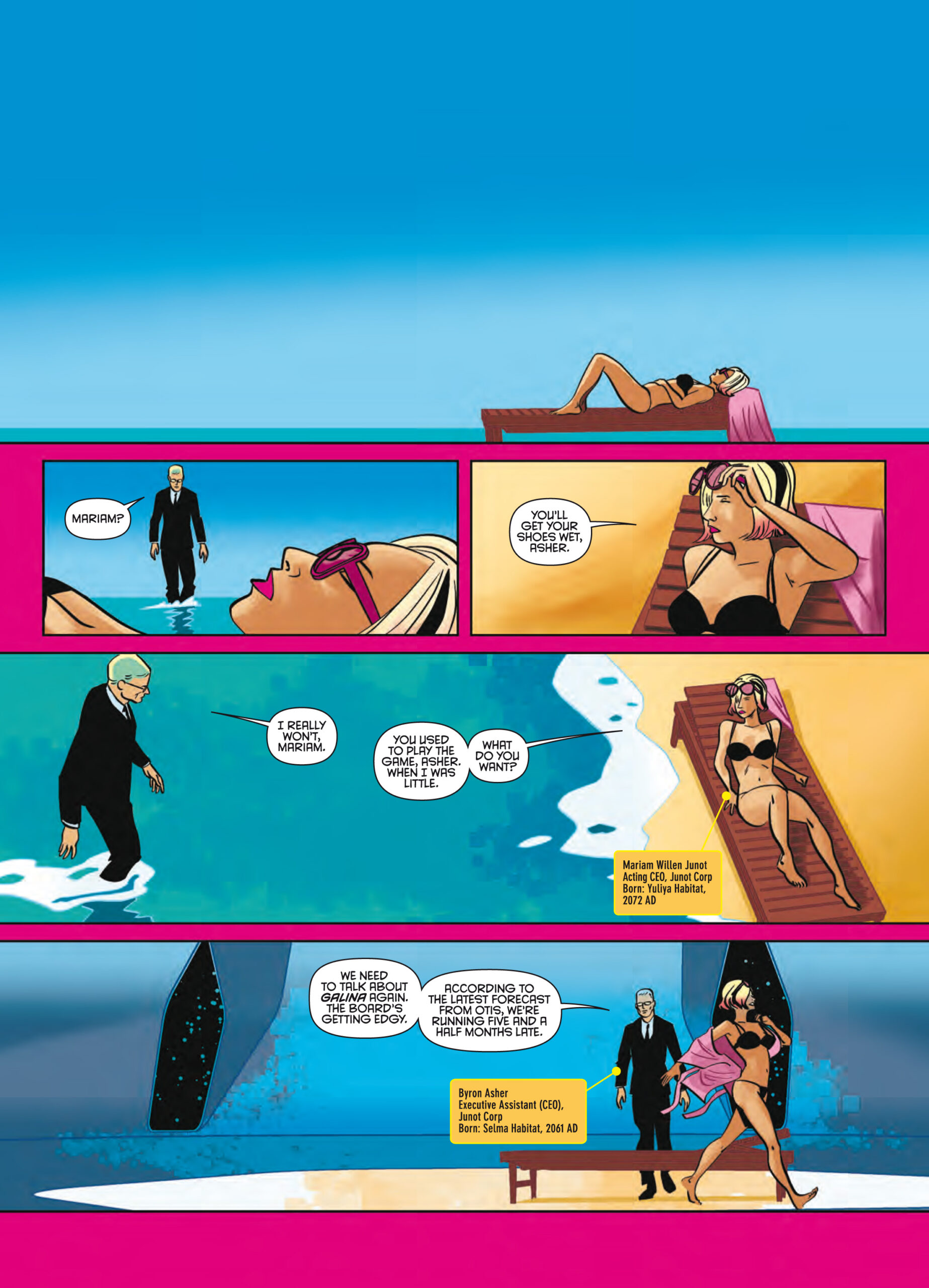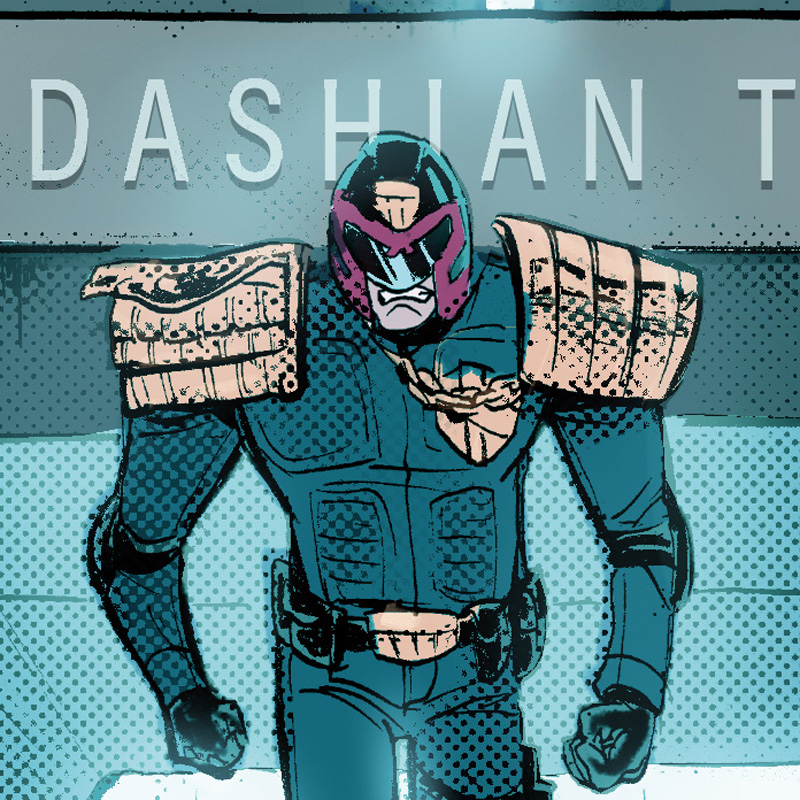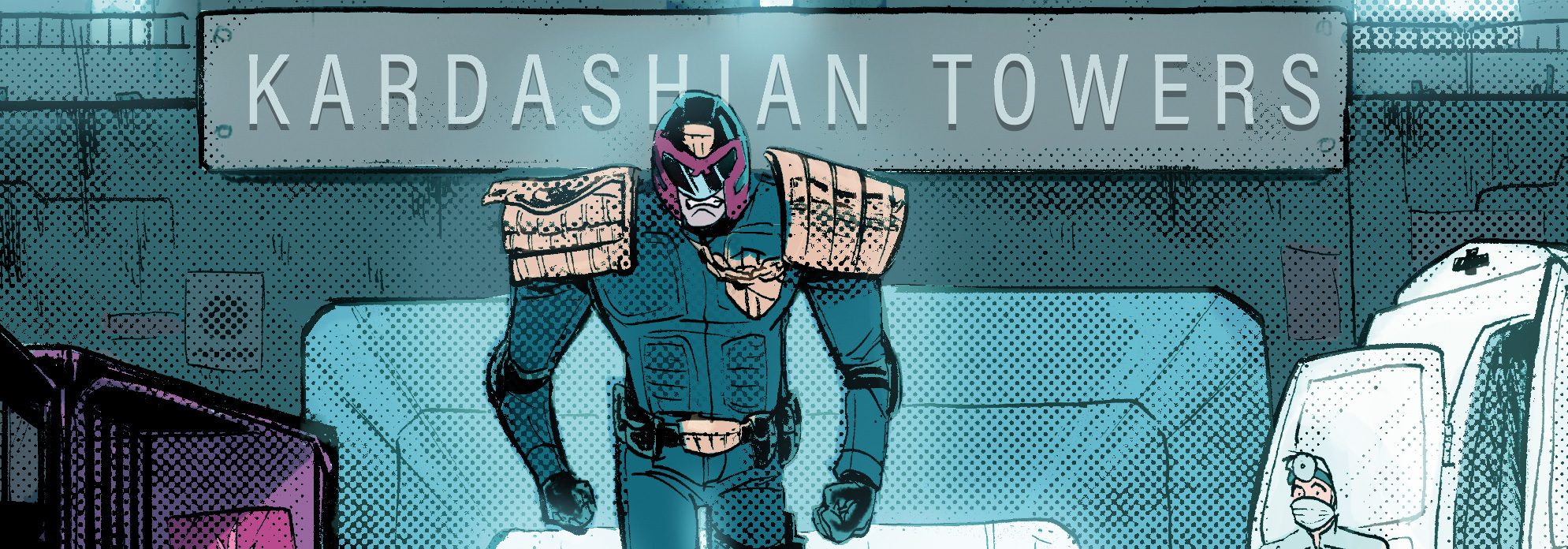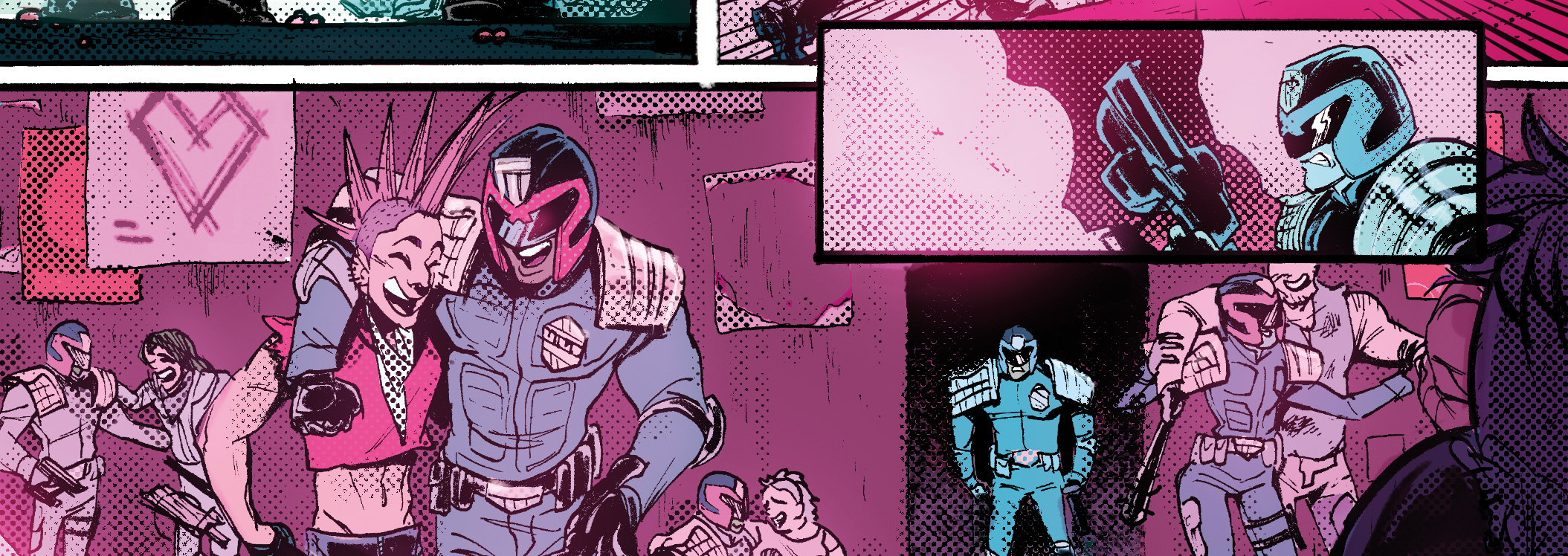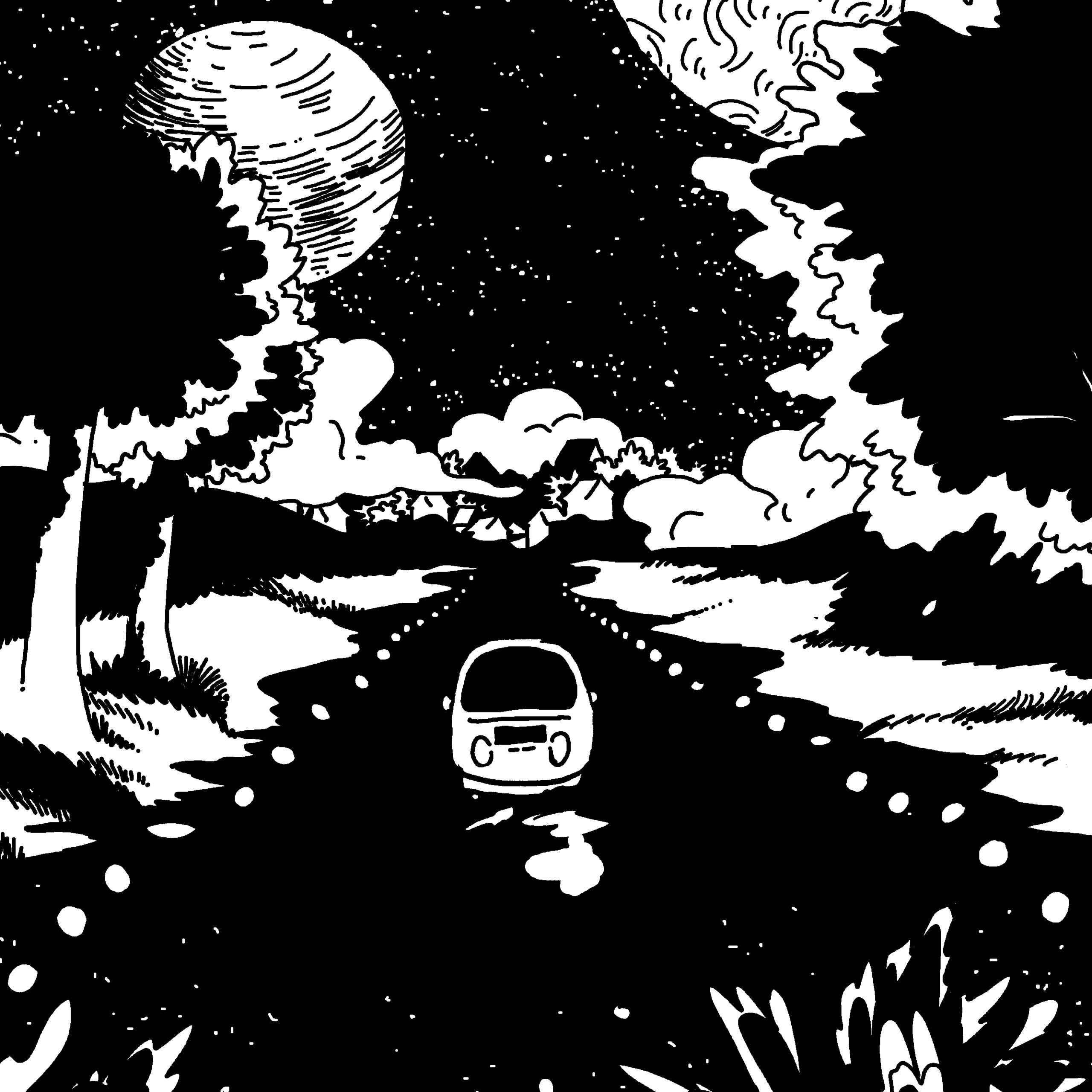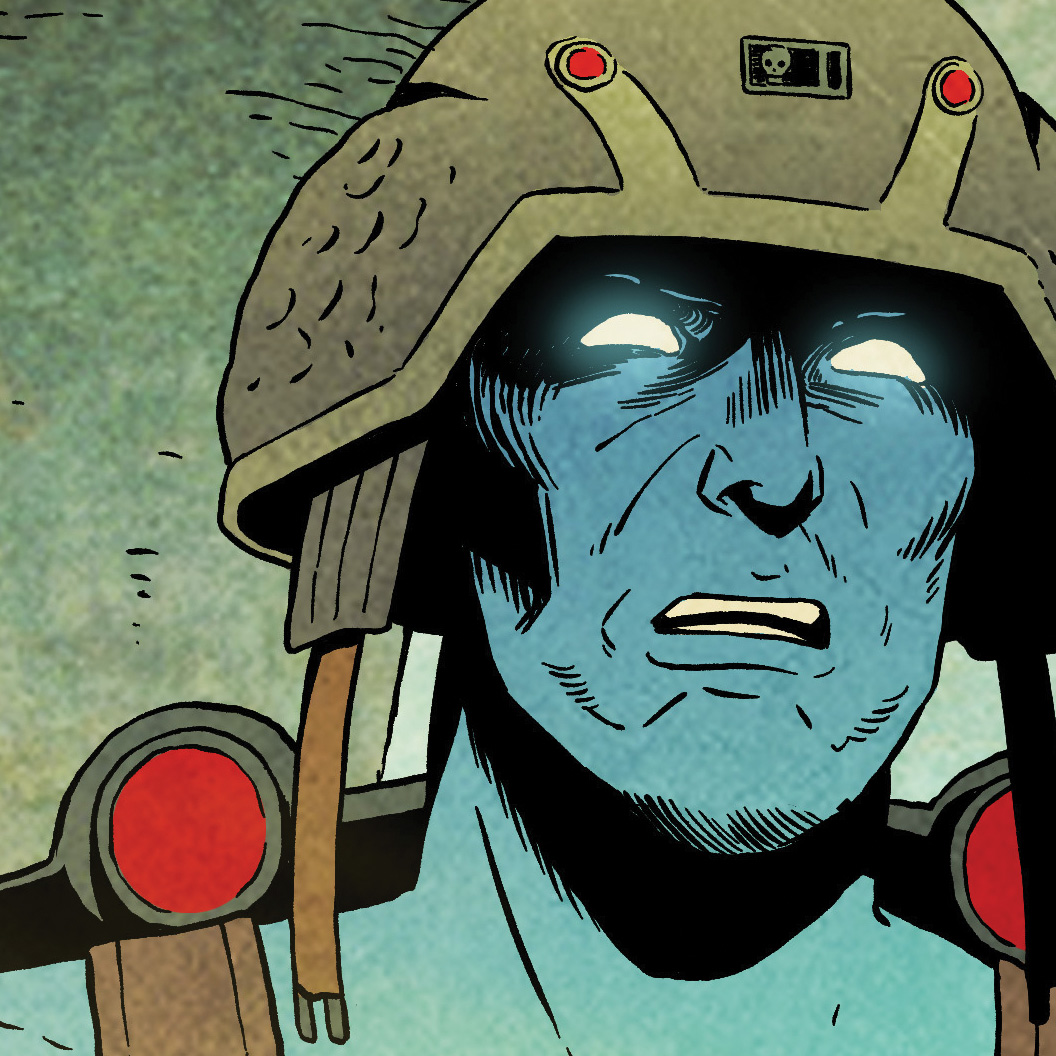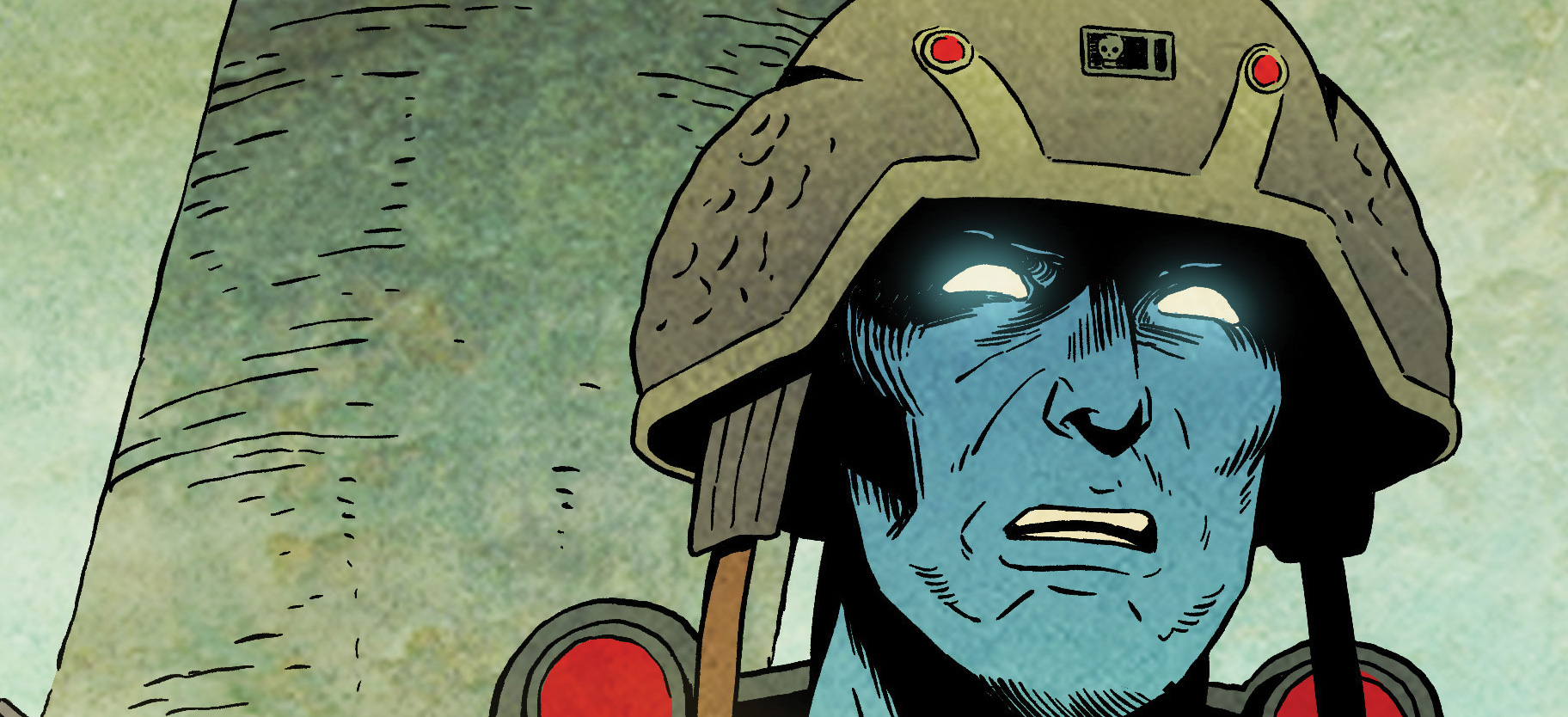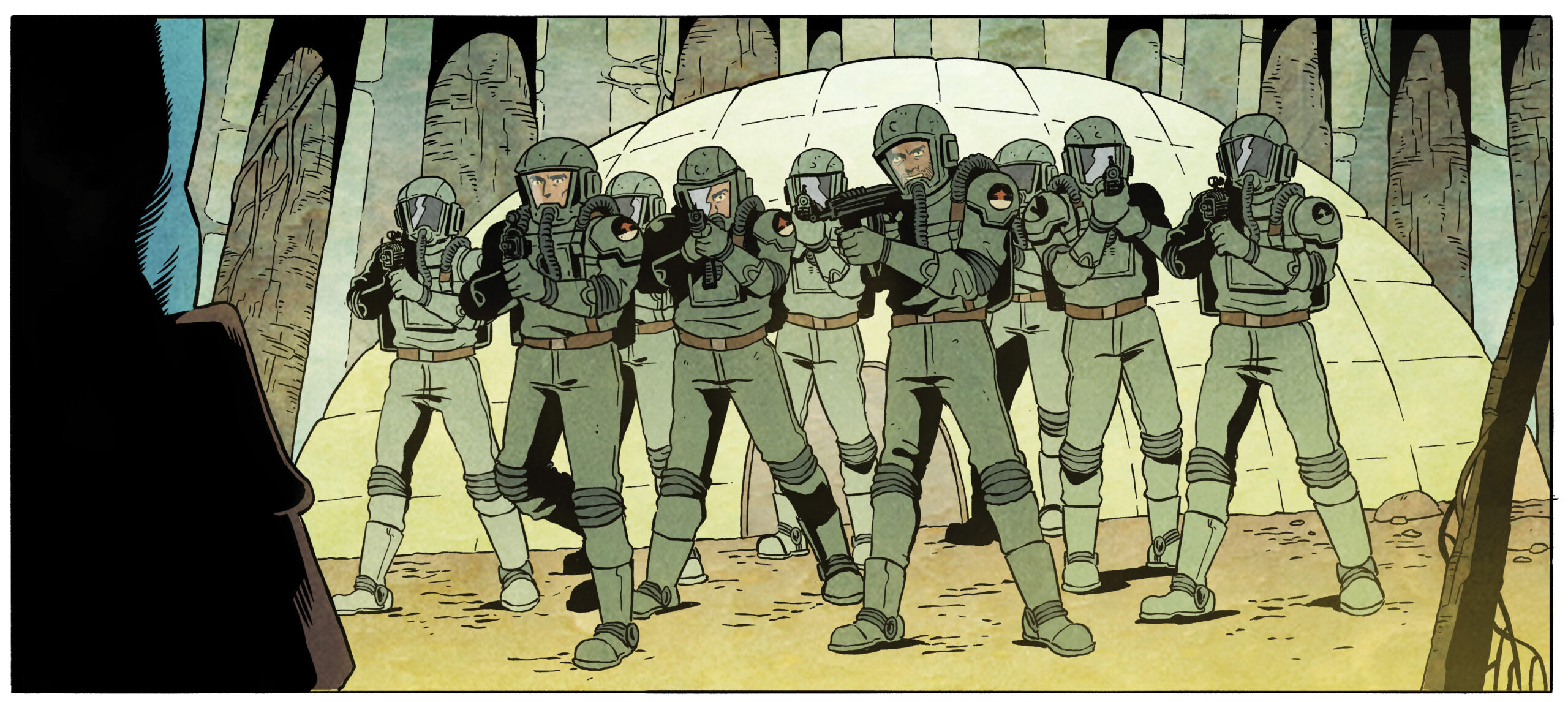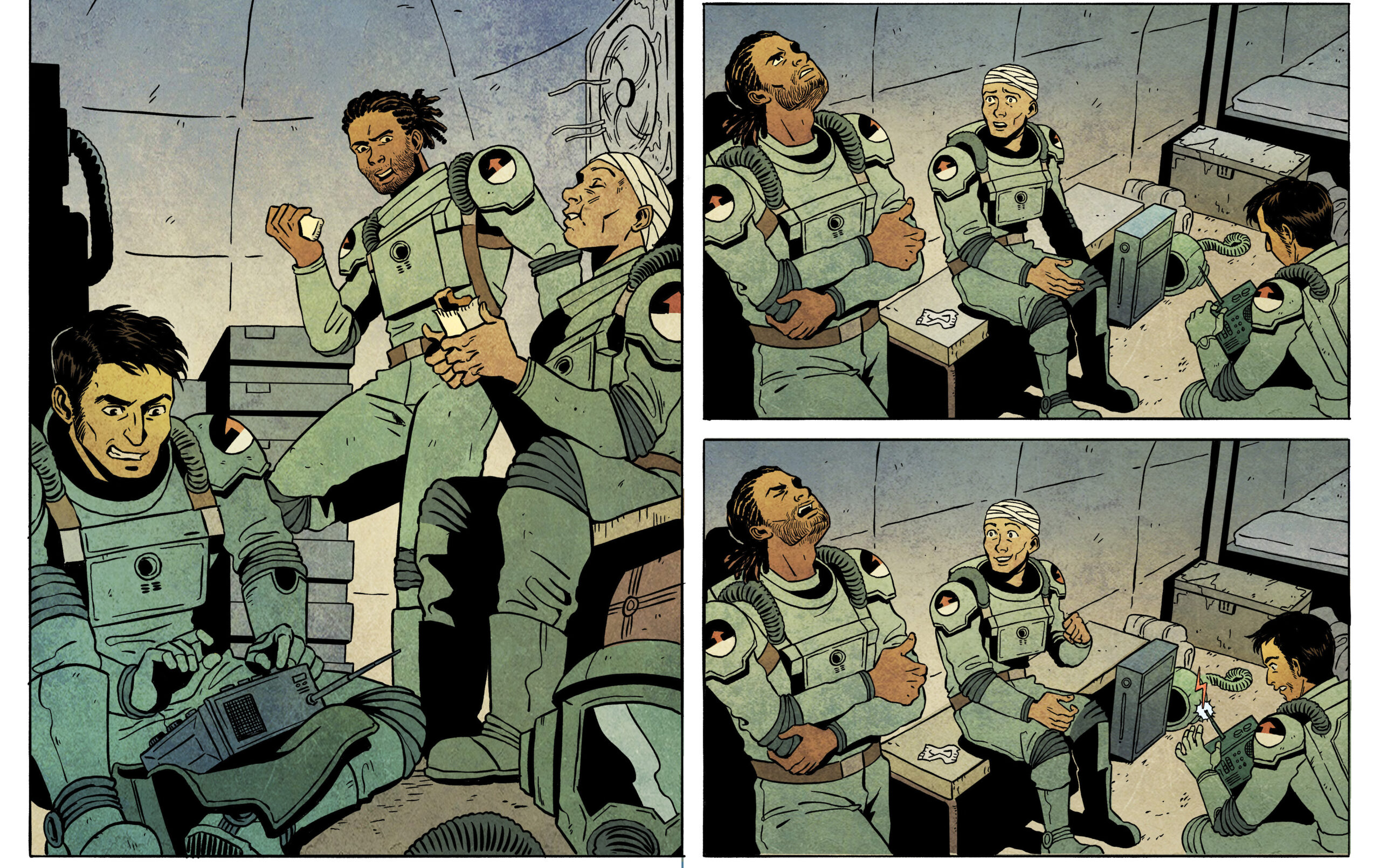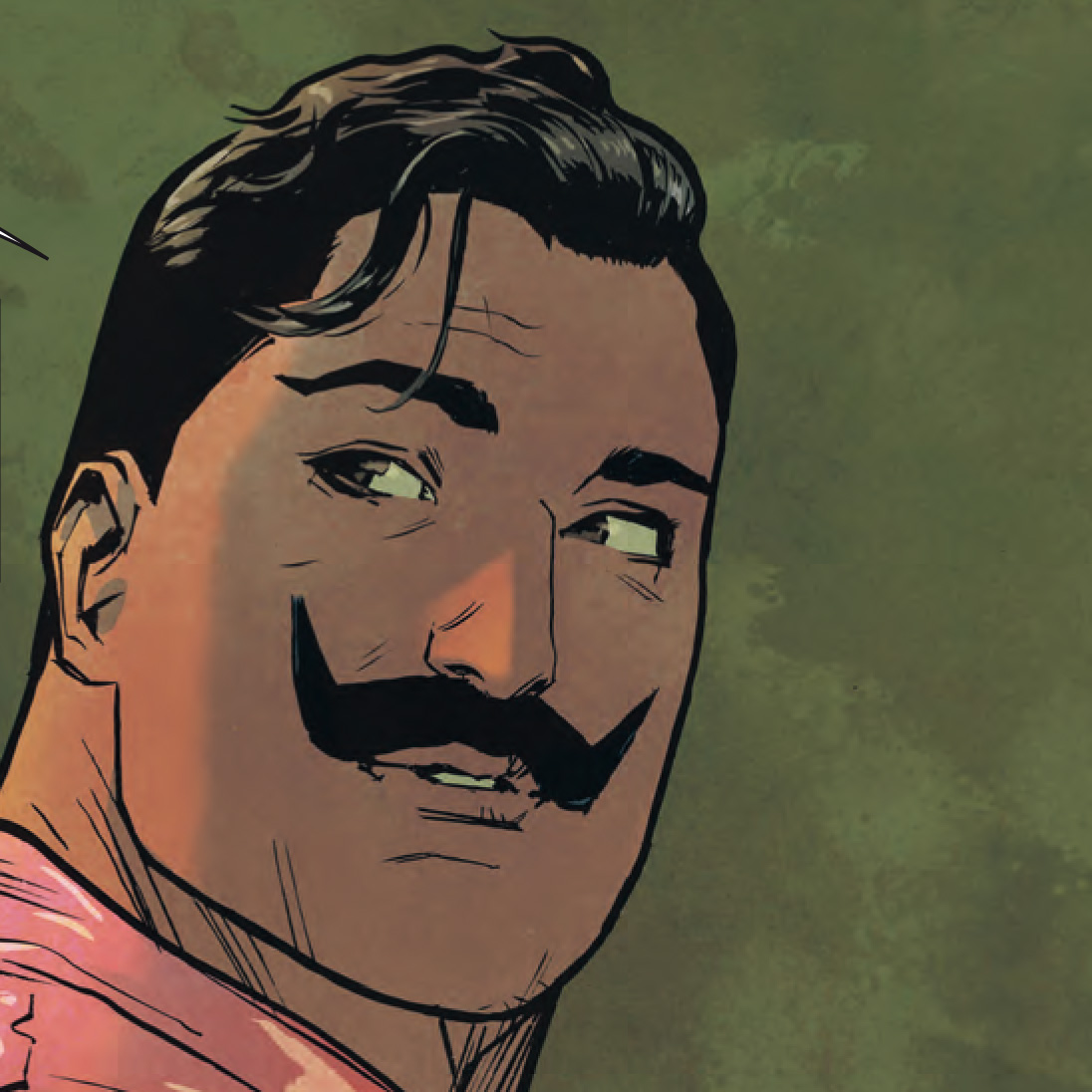
The monumental Judge Dredd Megazine #400 is nearly upon us – hitting shops on 19th September, packed with Thrill-Power – including the latest exploits of everyone’s favourite vampire dandy, the dashing and debonair Devlin Waugh!
This special tale of the voluptuary vamp occult investigator comes to you courtesy of US superstar writer, Aleš Kot (The New World, Zero, James Bond) and 2000 AD favourite artist Mike Dowling (Judge Dredd, Unfollow). Richard Bruton sat and chatted with them about their new Devlin Waugh story, ‘Call Me By Thy Name’…
Can you tell us a little about the story – is it just for this one issue, or will it be continued?
Aleš Kot: It’s a one-off, but it’s not a one-off. There’s a haunted building, but the building isn’t everything that’s haunted. There’s an orgy, but Devlin can’t quite stay. There’s a demon trapped inside a dildo, but how did he get there? These questions and riddles shall be answered, but some of the doors they open shall be walked through again, in the future.
Aleš, this is your first work over here at the house that Tharg built… were you already aware of 2000 AD in general, and of Devlin Waugh in particular and what was it that brought you to writing this particular vampiric dandy?
AK: I partially grew up reading semi-random translated Czech reprints of 2000 AD stories — and stories by many writers who started by writing for 2000 AD as well. 2000 AD is partially responsible for me!
And as for me and Devlin, ‘Swimming in Blood’ was one of those translated stories, and so, about a couple decades later…I mentioned wanting to write the character on the internet, 2000 AD caught wind of it, emails were exchanged, and…here I am.
Devlin just always felt right. We share large amounts of interests and attitude.
You’re only the third writer on the character, after creator John Smith, and recent writer Rory McConville – does it feel as though you’re stepping into some impressive shoes?
AK: I mean, John Smith is one of the best comics writers I ever read, so definitely. As for Rory’s work, I haven’t reread it enough to have a fully formed take yet, but I’m very much looking forward to doing that later this week.
How do you approach something like Waugh, with a voice and tone very much tied to one writer’s particular voice?
AK: You’re talking to a queer who once got so bored at an orgy that they spent most of their time on a sofa with a bottle of red, reading Necronomicon out loud while half-heartedly spanking a human chair. I also managed to swallow a ghost once, which is not a euphemism, at least not in this case. So it could be said I’ve got my qualifications.
It’s not really hard at all. Devlin’s basically a good friend I check in with whenever I want. We respect each other, and I think he’s got a bit of a crush on me.
Old Devlin is a hugely popular character with fans, right from his first appearance – what do you think is the attraction of the character?
AK: These are the first lines of Devlin’s publication history on Wikipedia, the arbiter of all truth:
2000 AD had mainly featured monosyllabic tough guys such as Judge Dredd and Rogue Trooper: people driven by either a sense of duty, or honour, or revenge. Waugh, by contrast, was a camp homosexual exorcist priest, employed by the future Vatican City, with medals in flower-arranging and Olympic high-diving, a bodybuilder’s physique and a cutting line in humour; his main motivation was simply to do “Anything to offset the dreadful ennui of it all!” Smith describes Waugh as a hedonist, “a languorous upper-class misfit, a fop, an ex-public schoolboy with a neat line in sarcasm. A lounge lizard. Imagine Noël Coward as played by Arnold Schwarzenegger”. Phillips visualised him missing a tooth like Terry-Thomas.
…what is not to be attracted to? AND he’s a vampire.
Mike, compared to Aleš, you’re an old hand at both 2000 AD and with Devlin, having become Devlin’s artist of choice, illustrating the last two tales, ‘Blood Debt’ and ‘Kiss of Death’, both written by Rory McConville. What is it about Waugh that you obviously enjoy drawing so much?
Mike Dowling: Devlin’s a real free spirit – his louche outlook changes the rules for him. If a monster invades his world he’s as likely to flirt with it as try and kill it and his somewhat amoral character adds to the fun. It’s a nice contrast from Dredd and some of the more stoic AD characters. It allows for more complicated outcomes than ‘good guys fight the bad guys, and win’.
Can you take us through the artistic process of creating Waugh, from initial ideas through to finished page? How was the collaborative process for you both?
MD: I pretty much just worked straight from Aleš’ script. I have a fairly simple process – working from rough sketches through to the finished page. Some of the art required a bit of lateral thinking though – Aleš has tricky structure for this one!
AK: I handed in the pages and Mike’s outdone himself!
And how was the experience of working for 2000 AD compared to US publishers?
AK: Just like at any company — if the editor and the team are all committed to making the best possible story and everyone puts in the work, it usually works quite well, and I’m happy to say that feels the case here through and through. I’m delighted to be working with the team and with everyone at 2000 AD, and I am being treated wonderfully.
MD: Agreed! – Everyone at 2000 AD seems totally committed to doing the best possible work. I wouldn’t want to generalise about American publishers but my experiences have been similarly positive.
What was your first 2000 AD experience as a reader?
MD: It’s hard to be sure! I read my brothers old copies from a young age – They were just lying around the house – as far as I knew 2000 AD was always there. Button Man and some of Mike McMahon’s Sláine art seem to rise to the top of the memory soup though.
AK: Oh, a few of those Czech-translated reprints…some D.R. and Quinch, Sláine, Johnny Nemo…I was hooked. I think I was about eleven years old.
Favourite 2000 AD strips/characters/creators?
AK: Devlin Waugh, Sláine, Indigo Prime, Judge Dredd, Nemesis the Warlock, Strontium Dog, Halo Jones…as far as creators go, Pat Mills, Garth Ennis, Carlos Ezquerra, John Smith, Sean Phillips, Edmund Bagwell, Frazer Irving, Alan Moore, John Wagner, Alan Grant, Simon Bisley, Colin MacNeil, Kev Walker, Chris Weston…as far as stories go, I’ll name just three that I want to reread the most right now: Sláine: The Horned God, Cradlegrave, and Batman/Judge Dredd: Judgment on Gotham.
MD: There’s so much to choose from! I like all of Aleš’ picks – I’ll add Button Man, Judge Anderson, the Mega-City Undercover stories and Ichabod Azrael. I really like Rob Williams take on Dredd – his collaborations with Chris Weston and Henry Flint are great. I also think John Wagner and Alan Grant deserve some kind of elevation for their amazing work down the years.
The bumper Judge Dredd Megazine #400 is out on 19 September!


